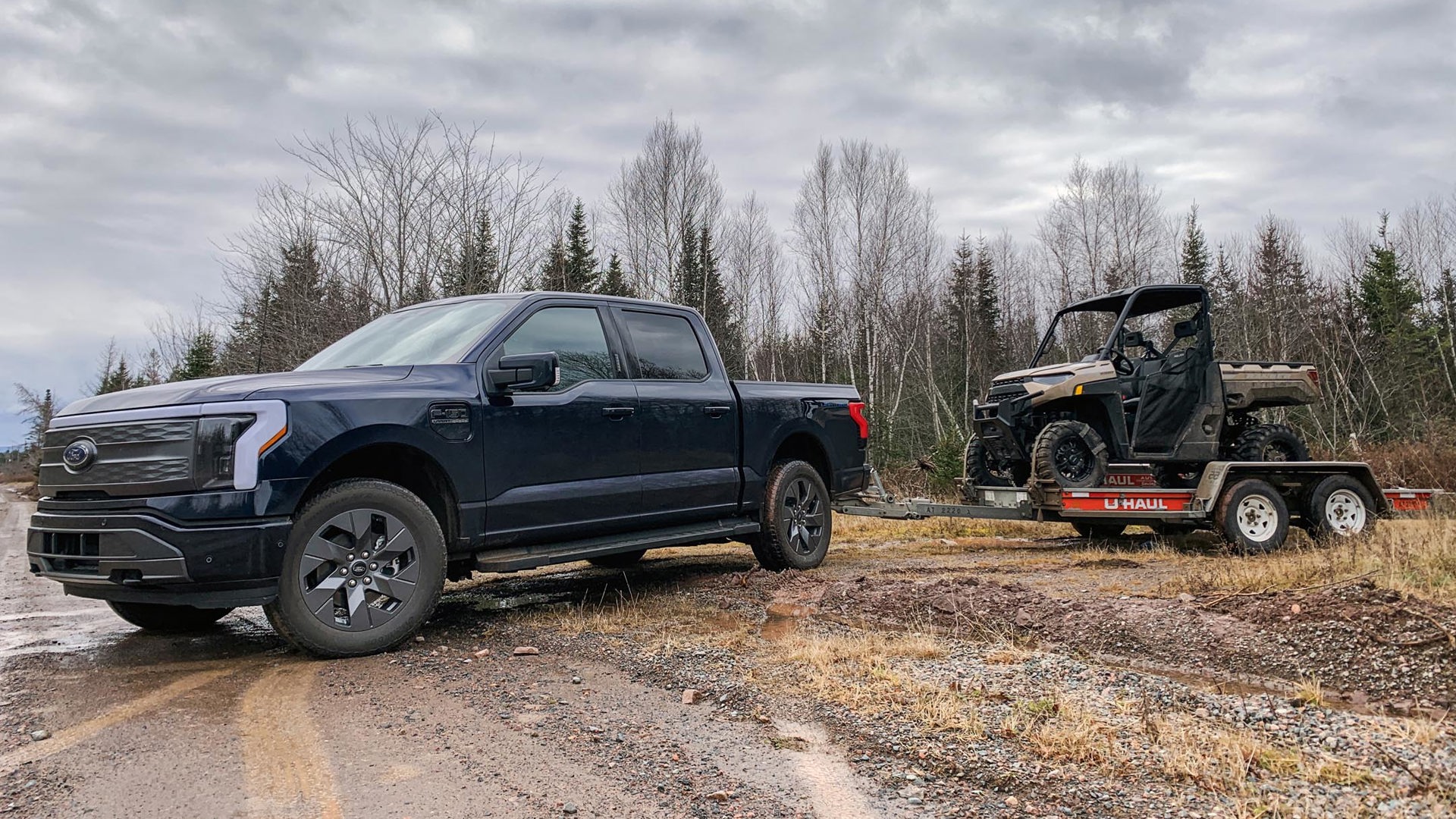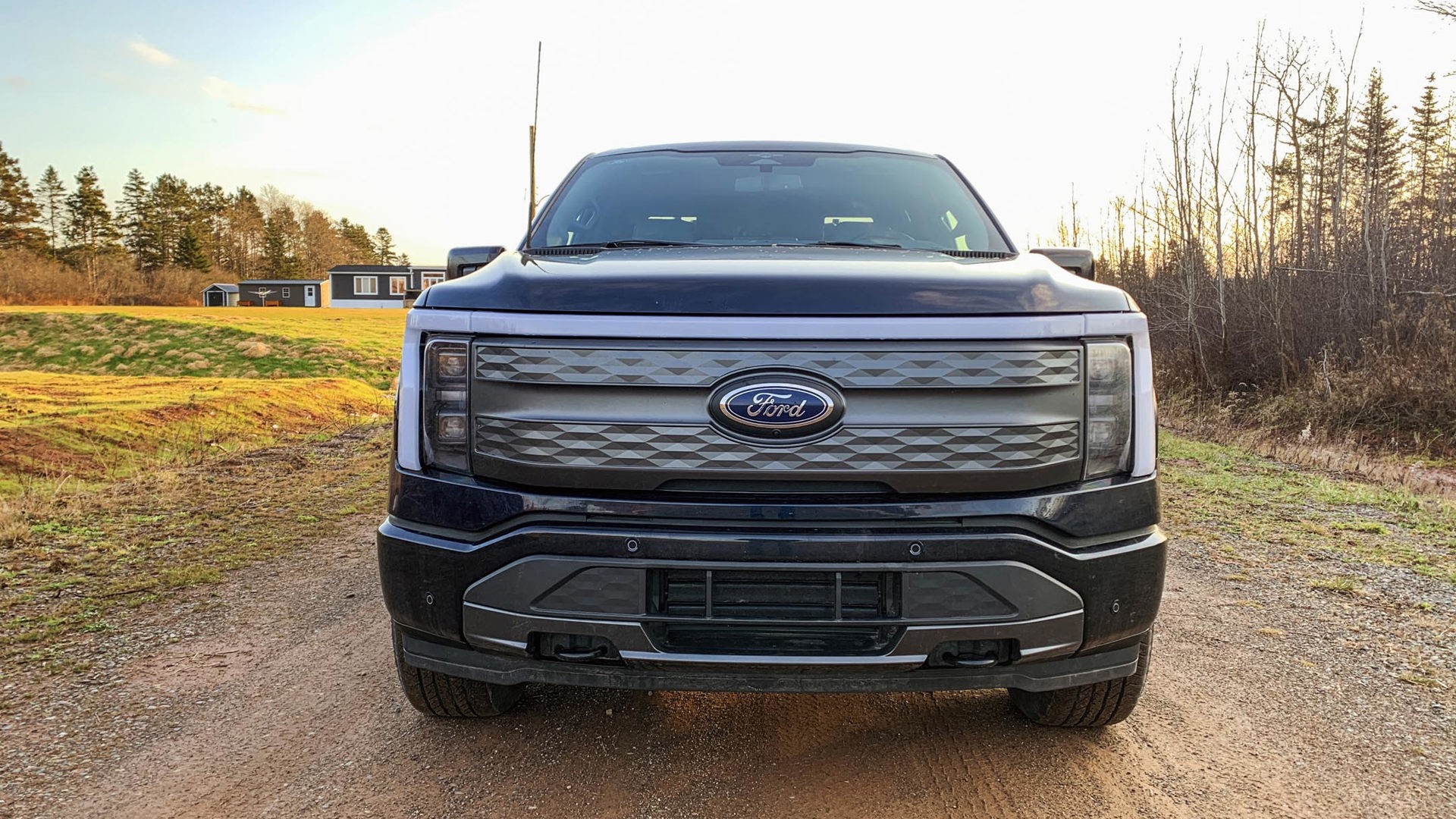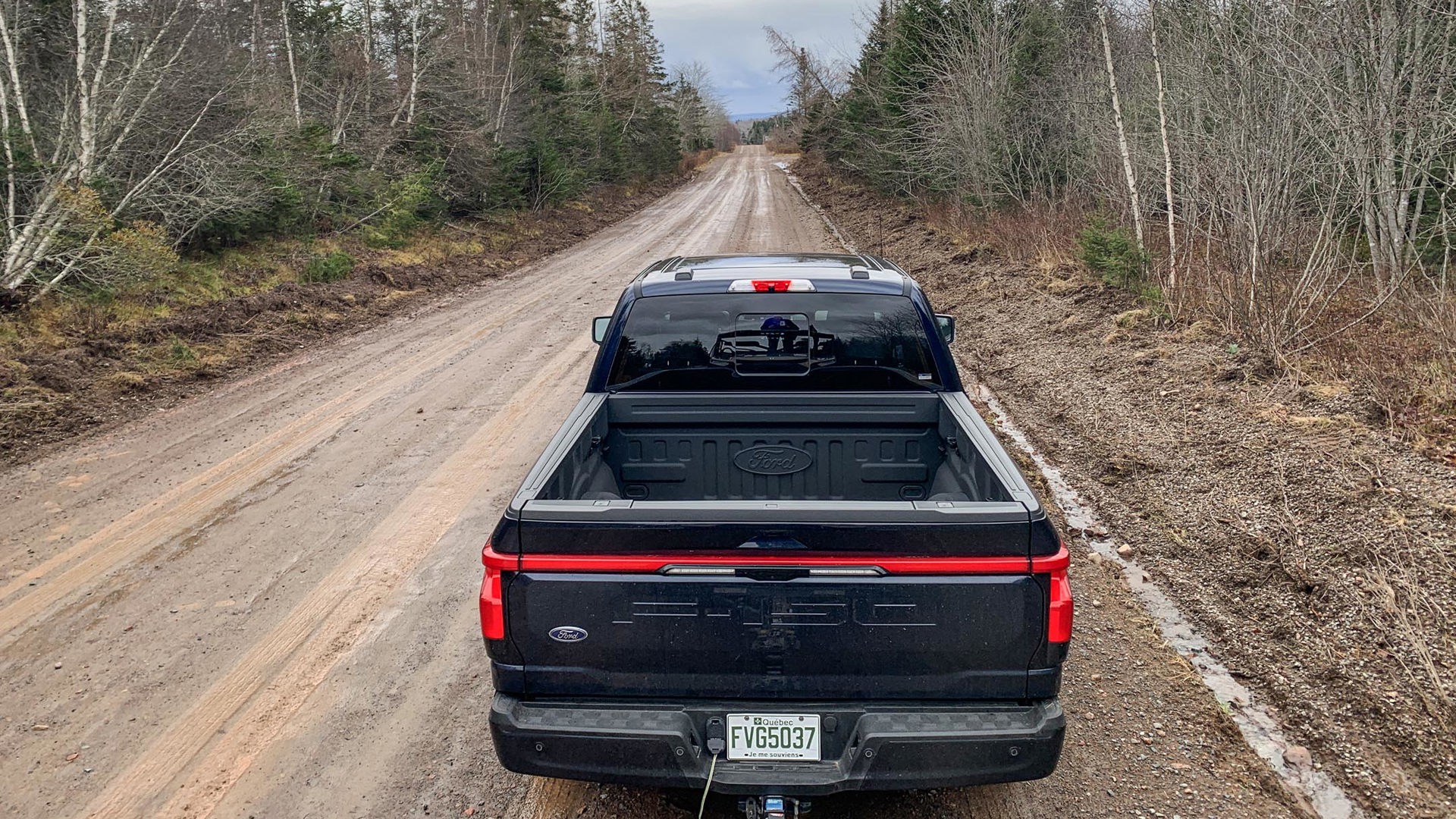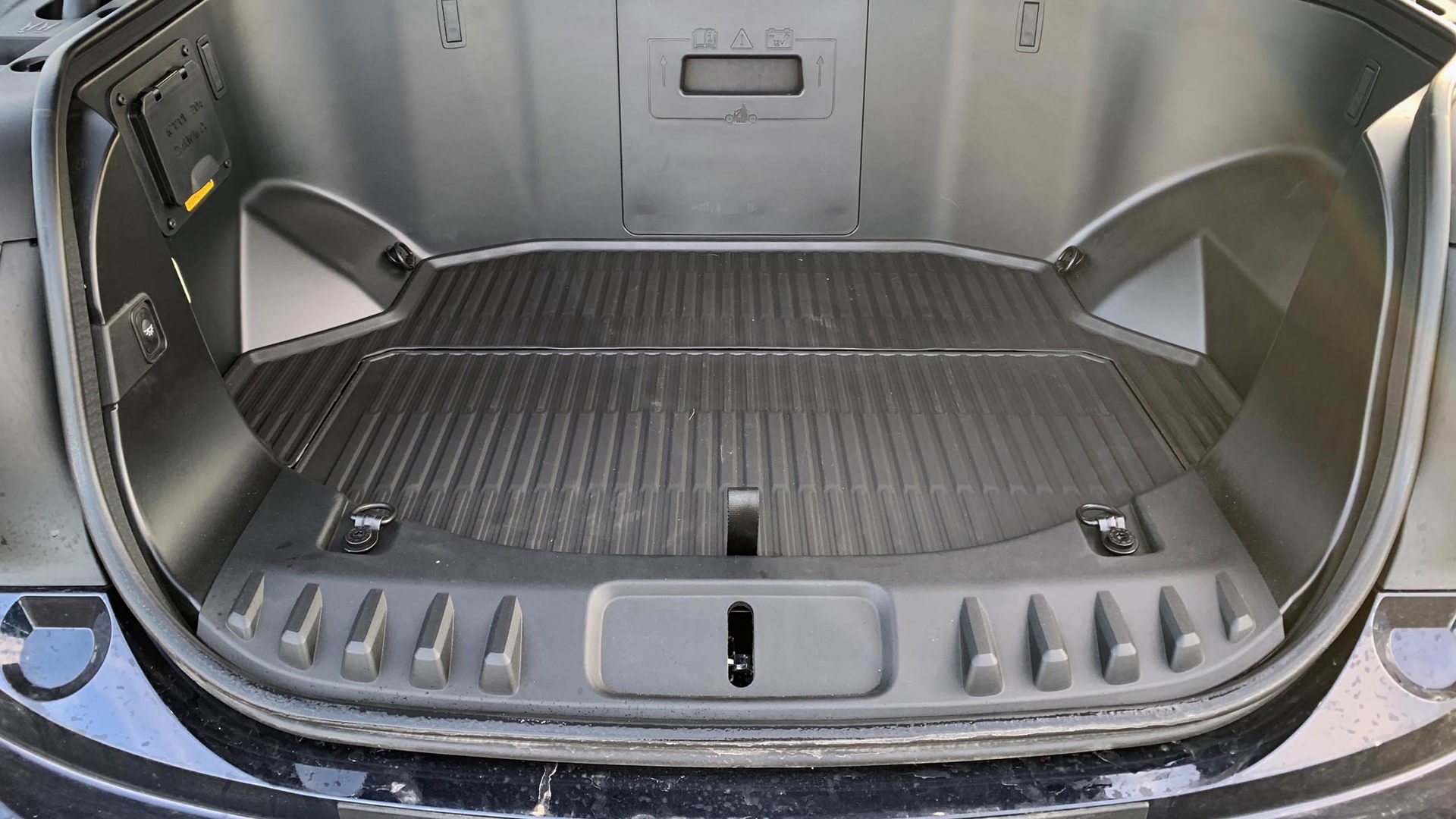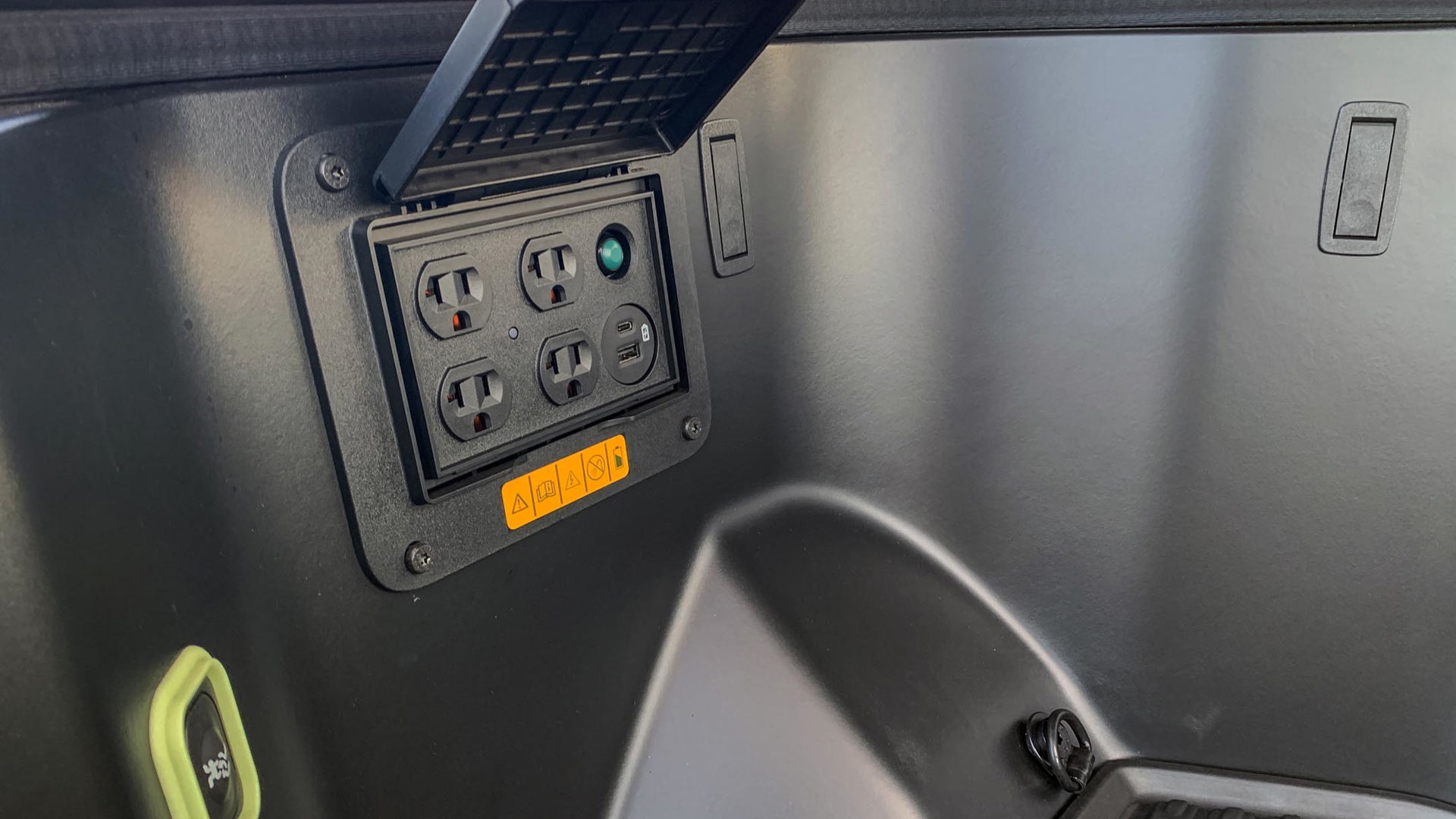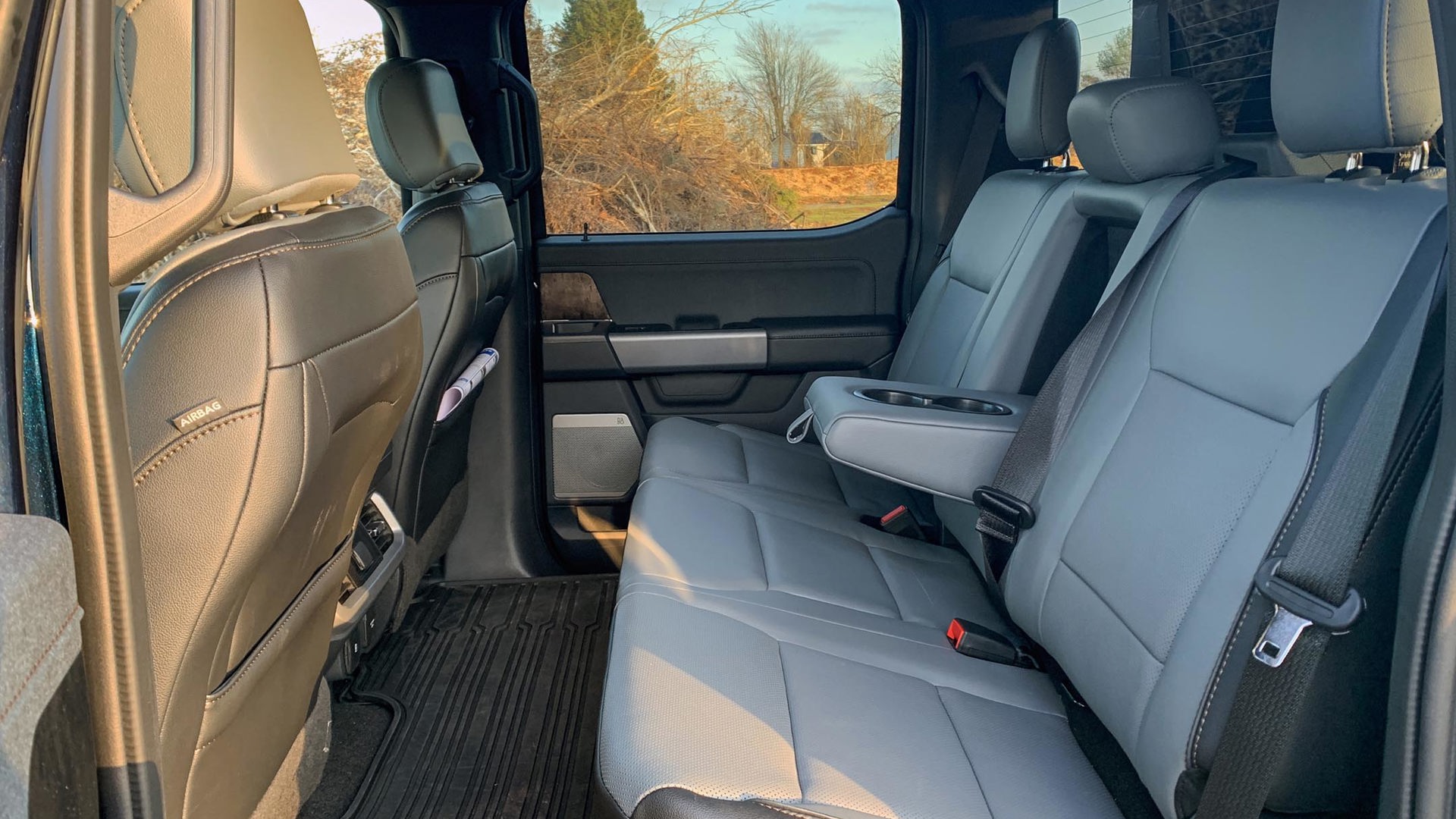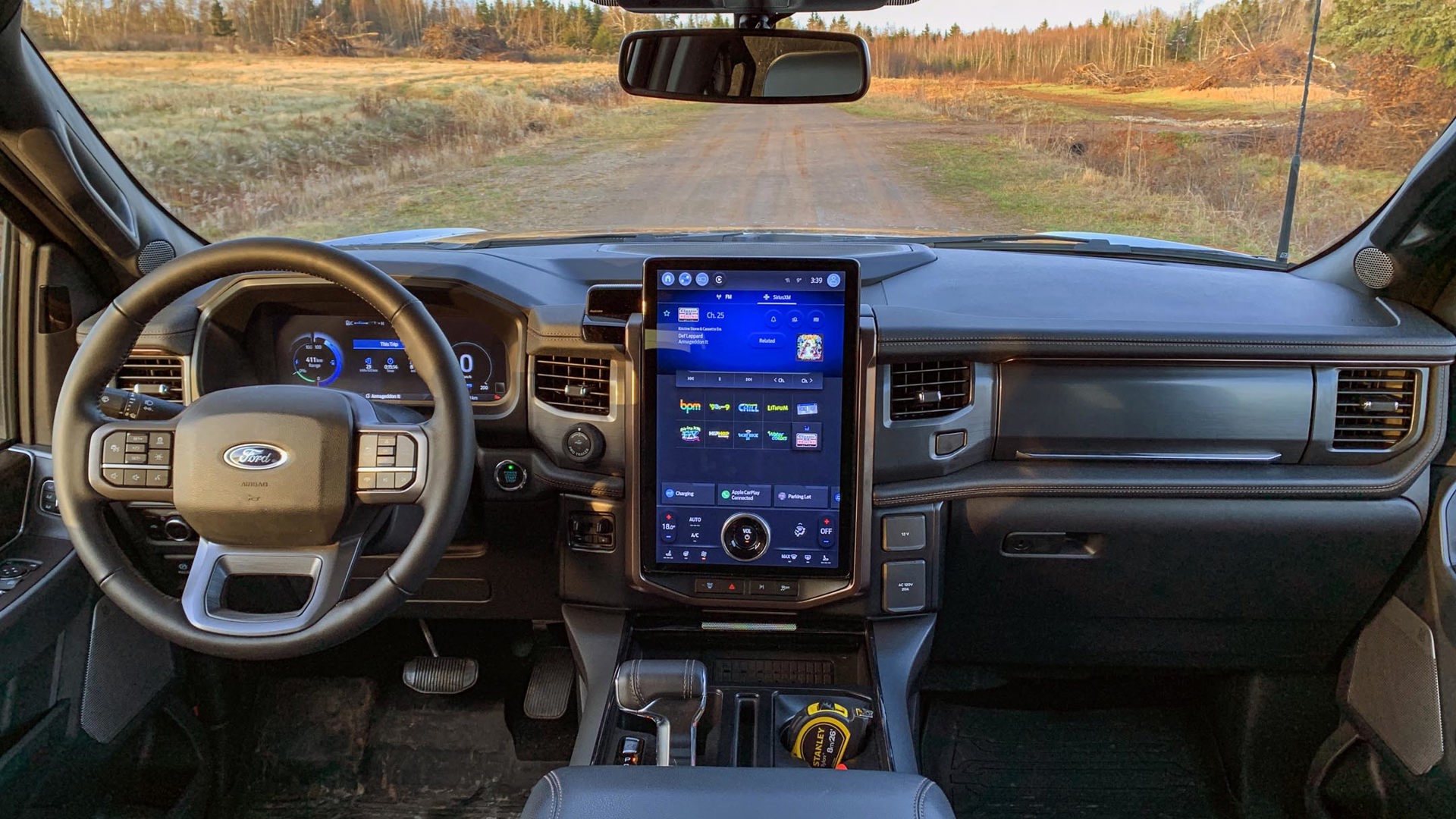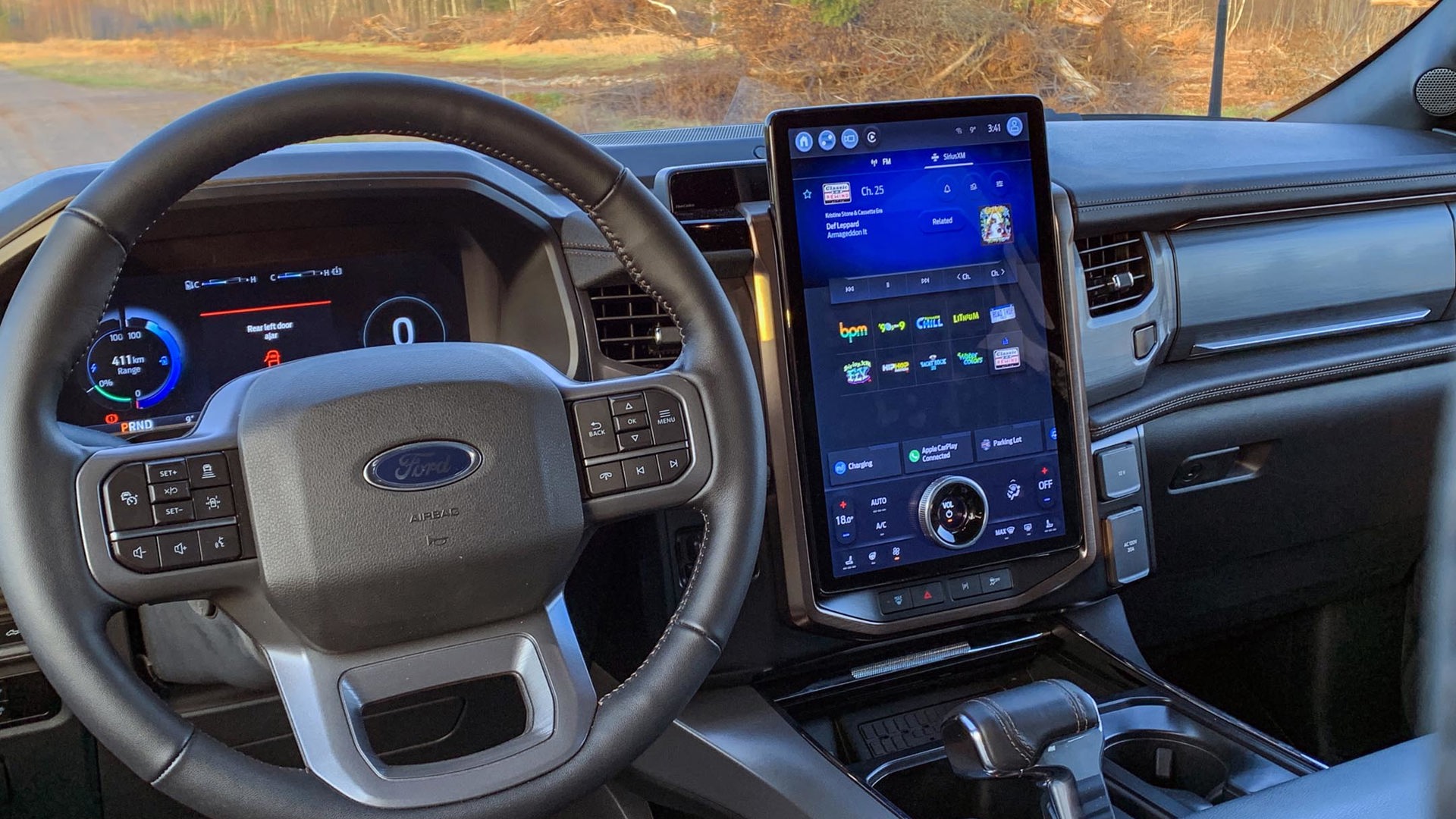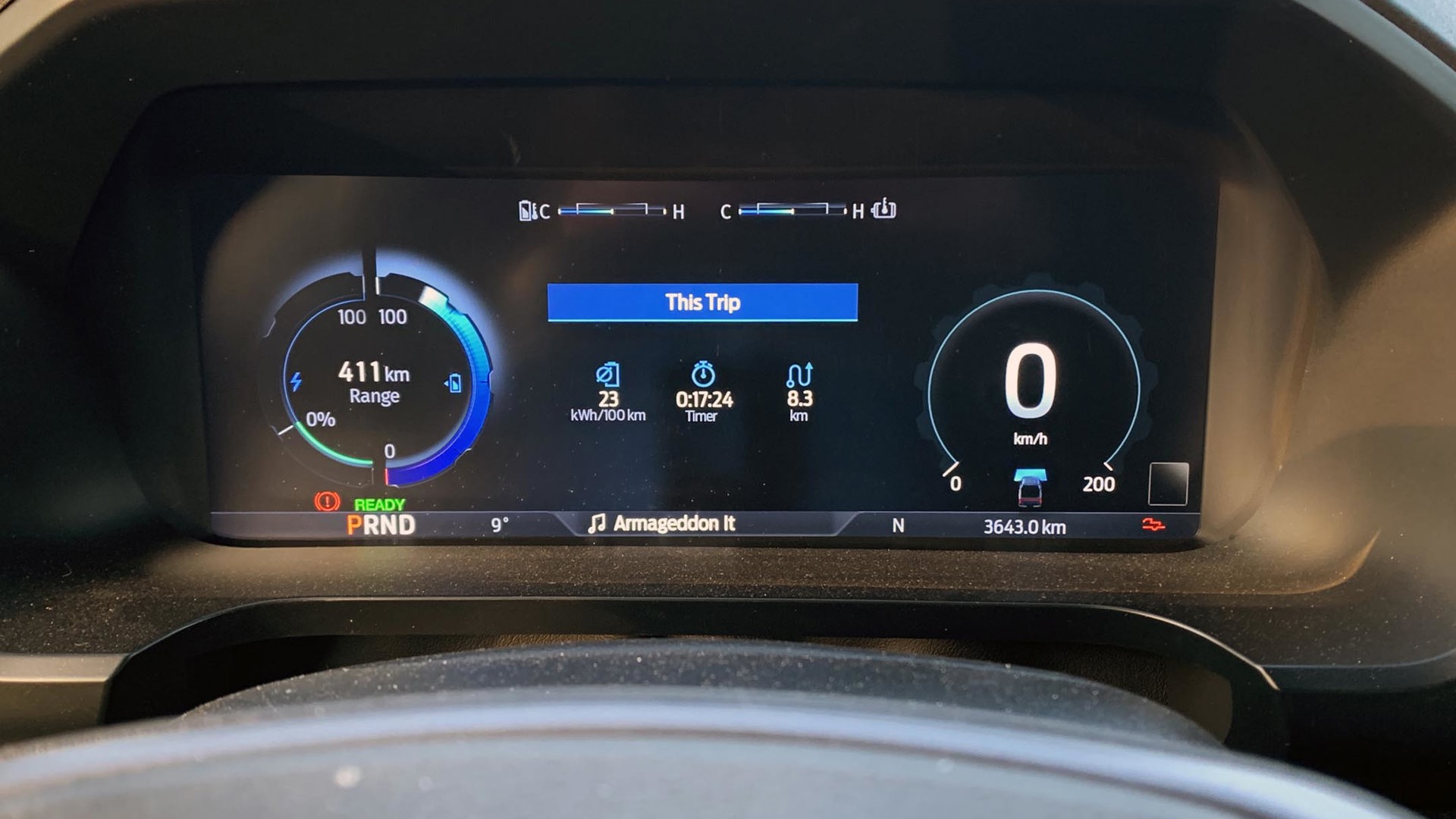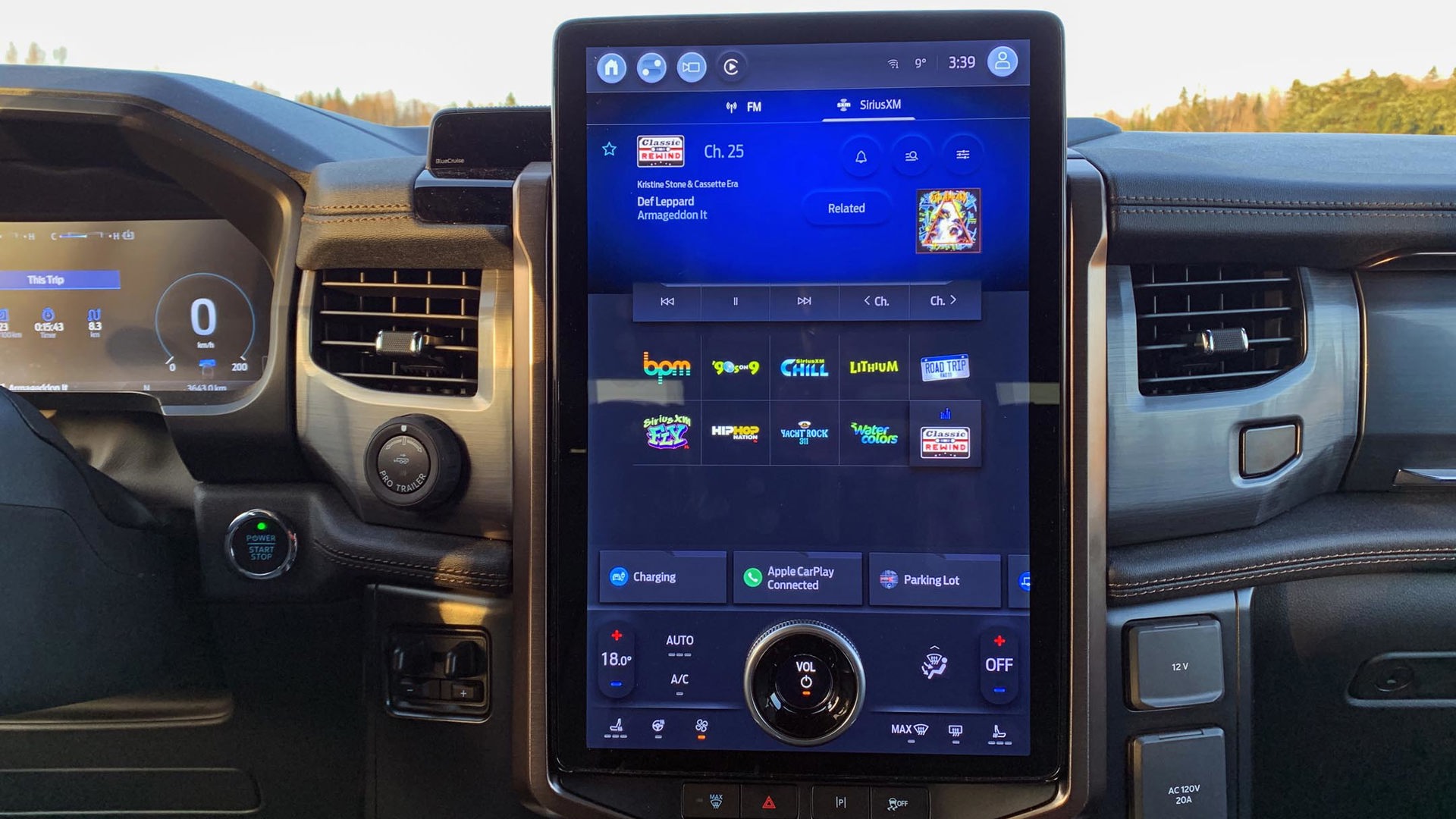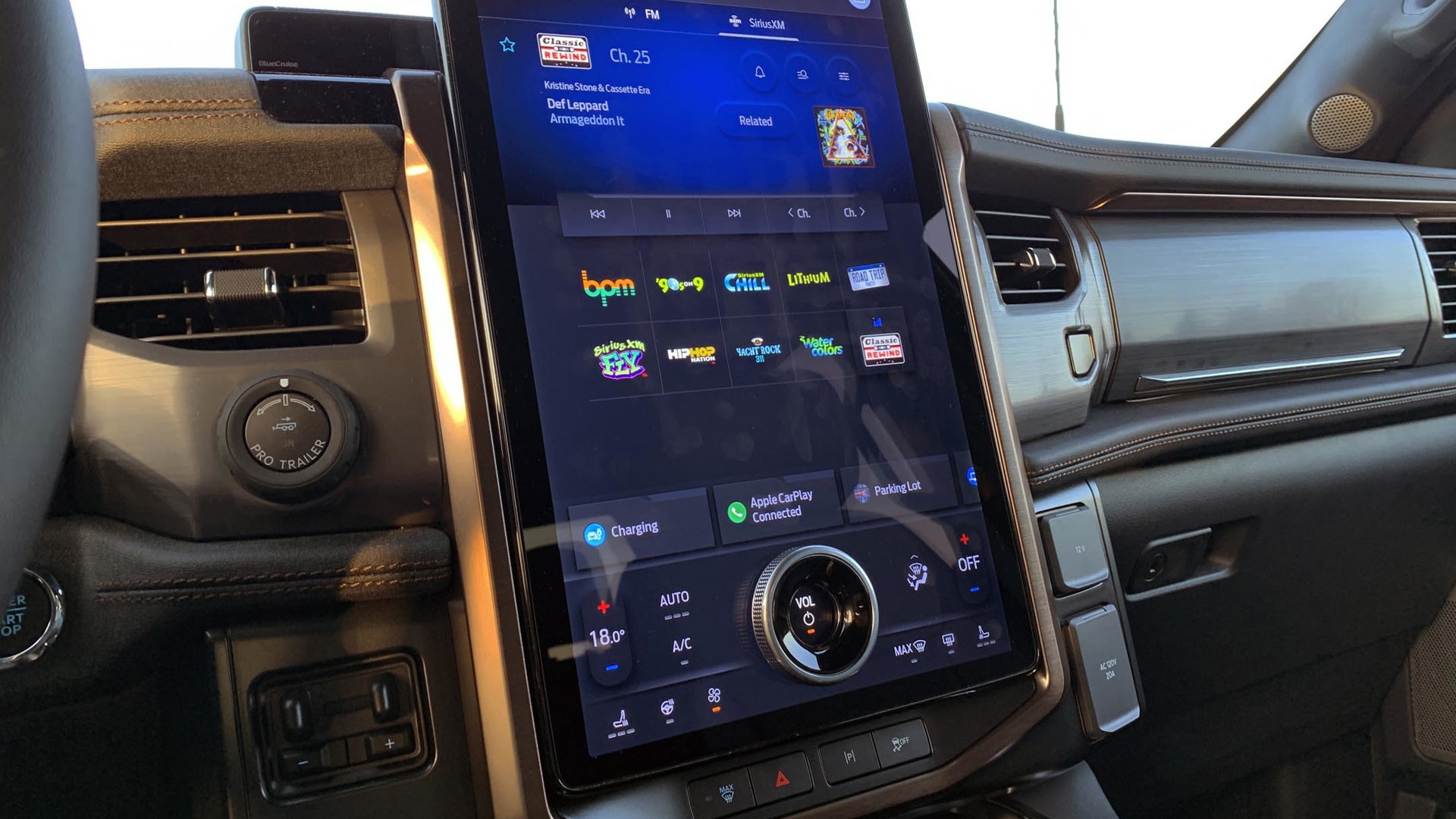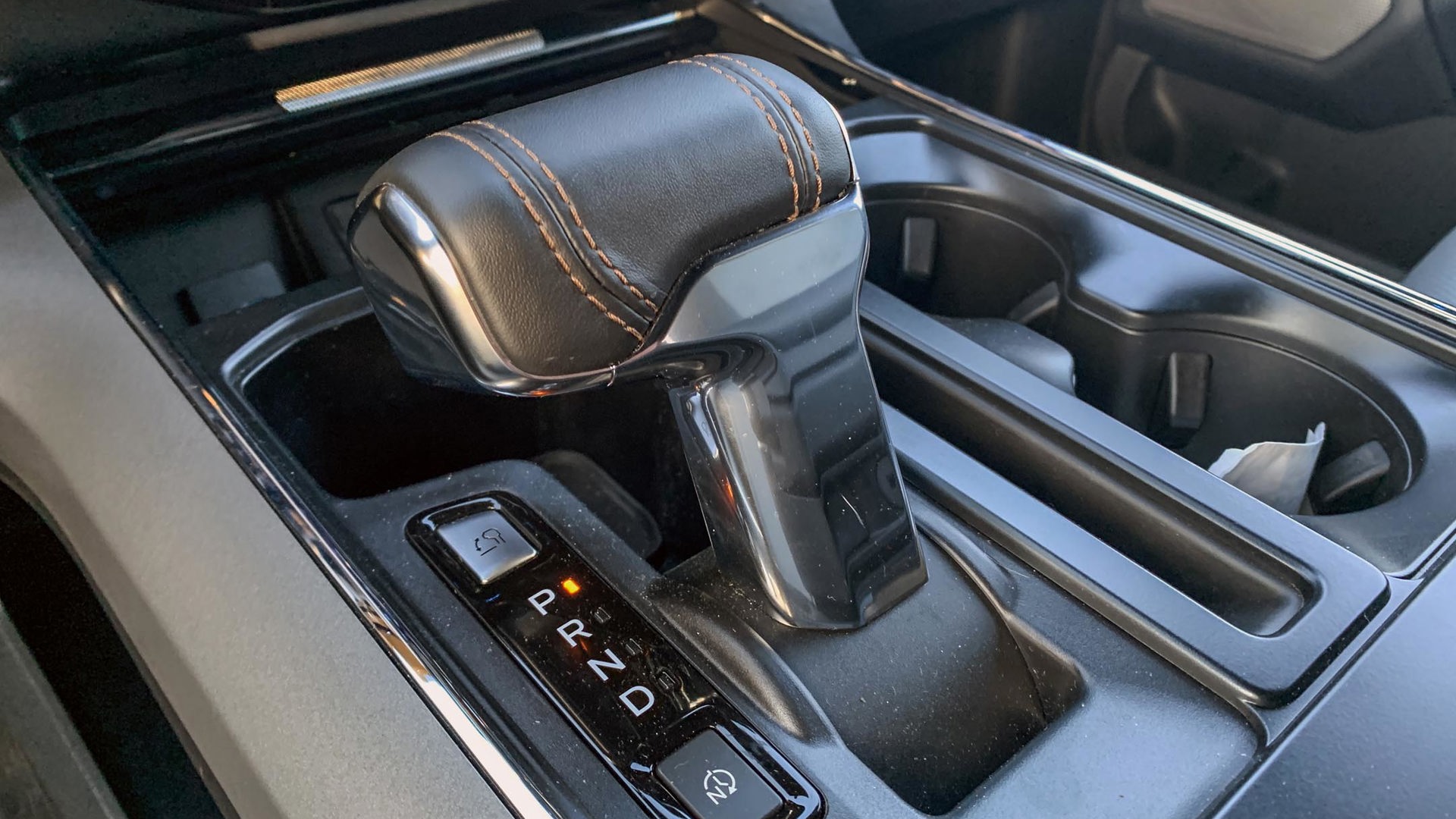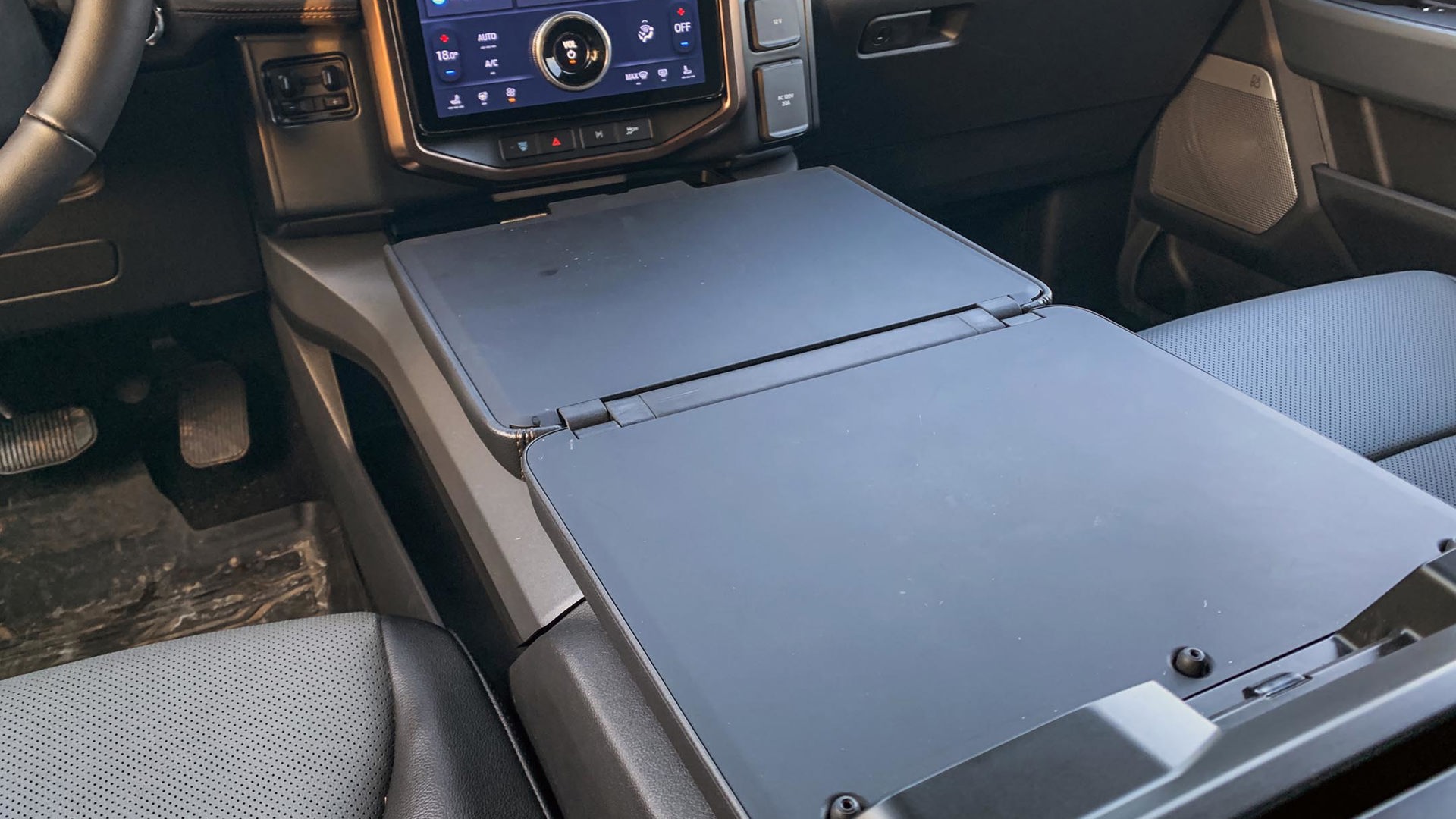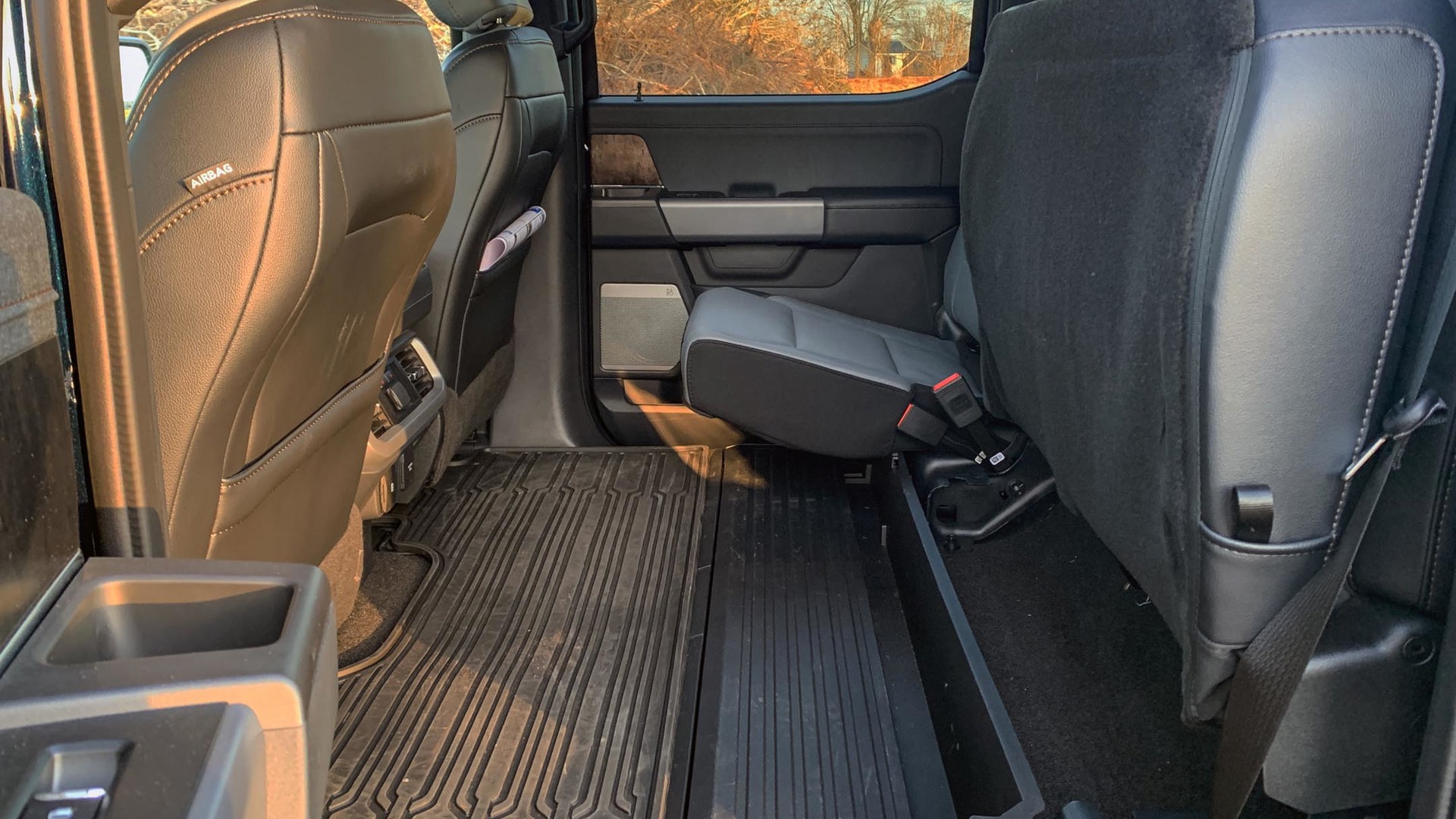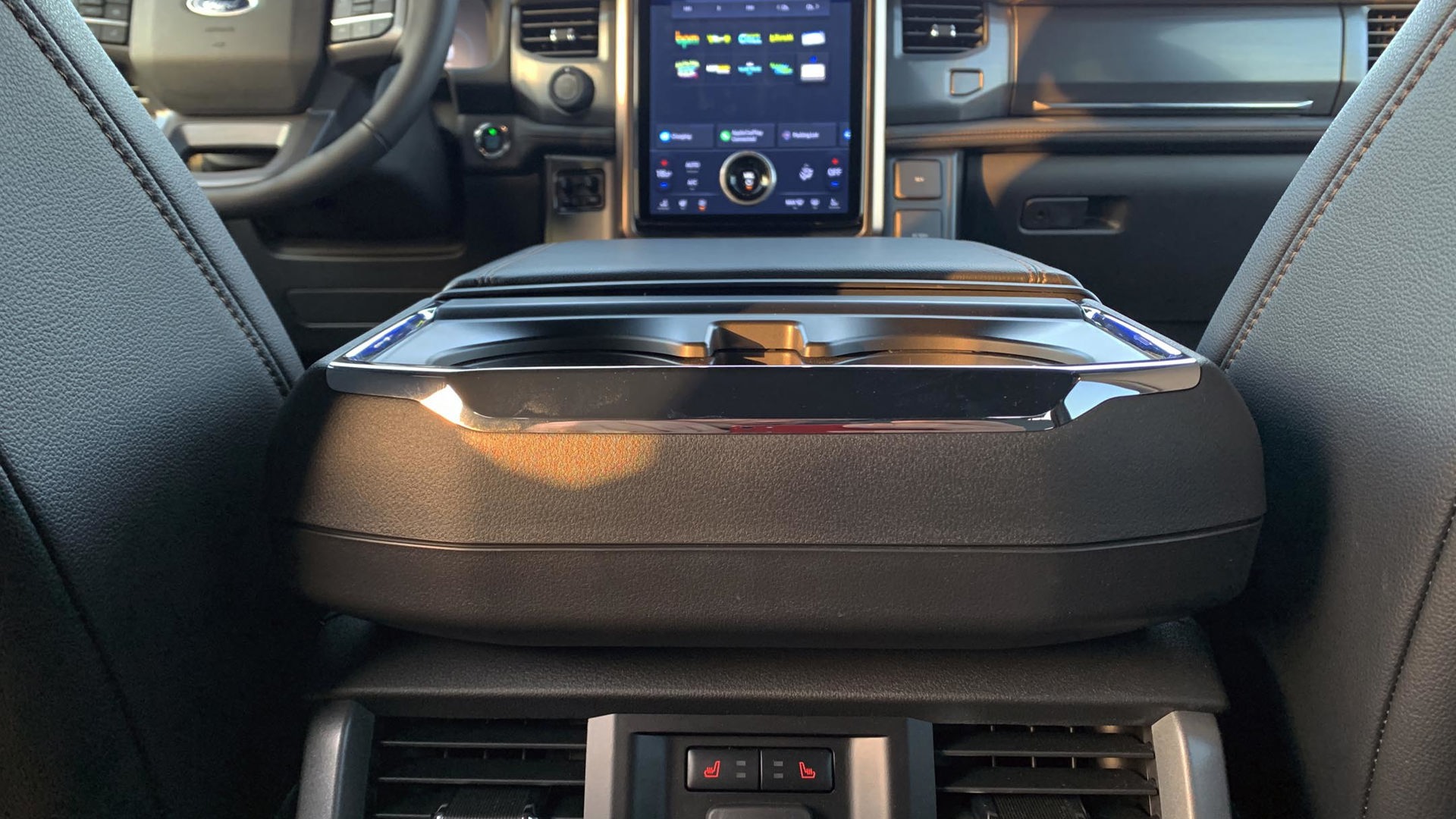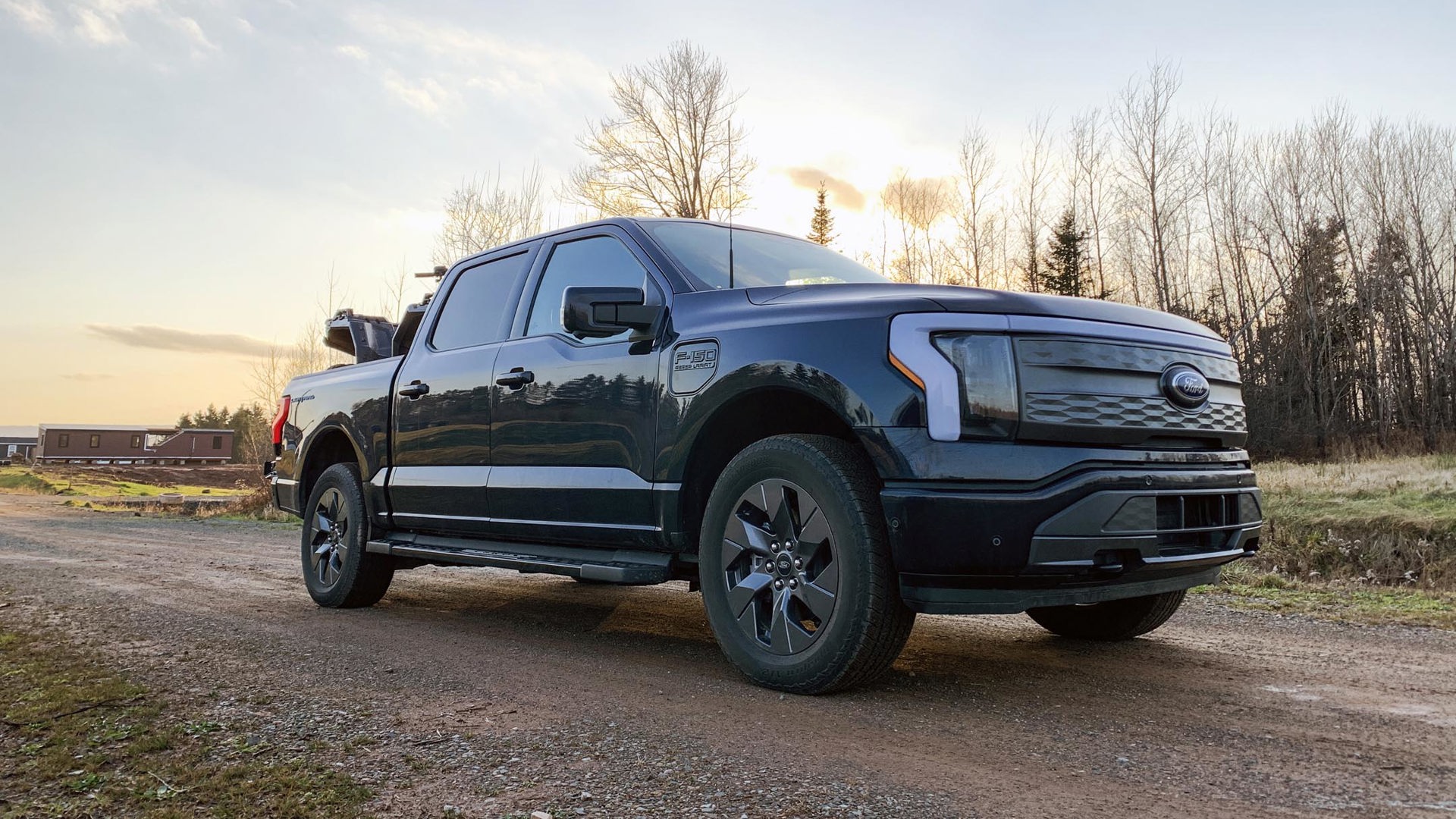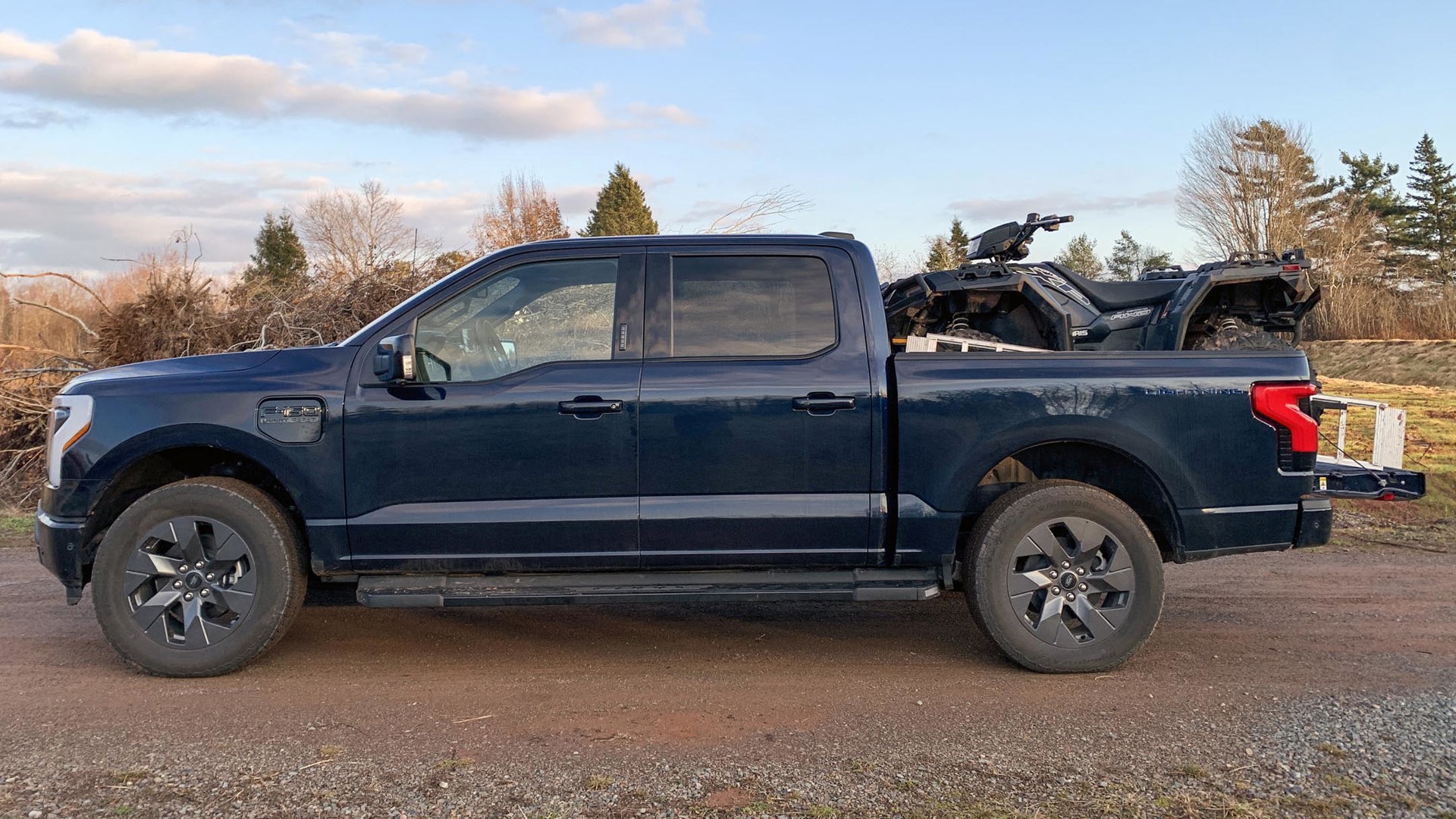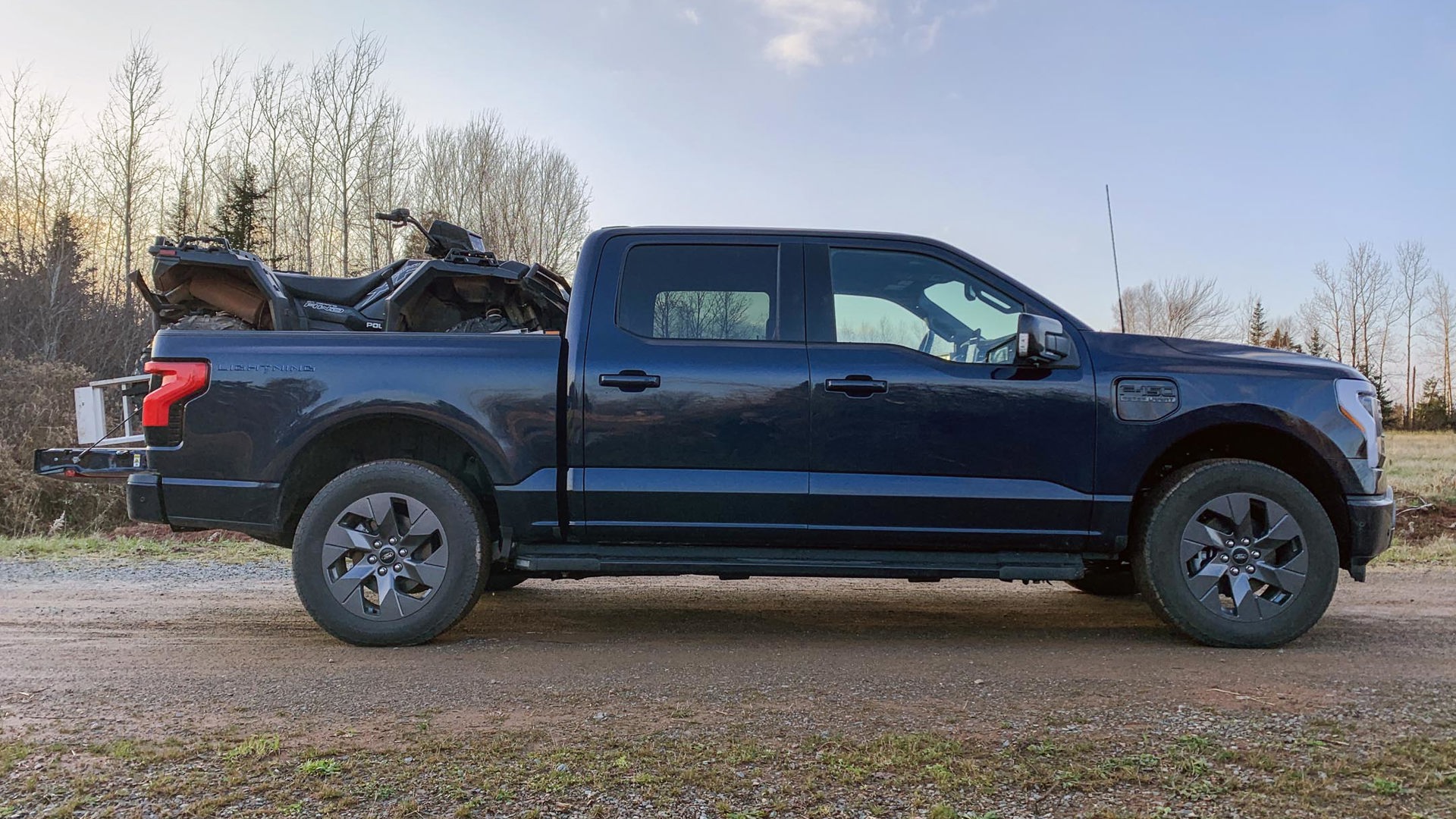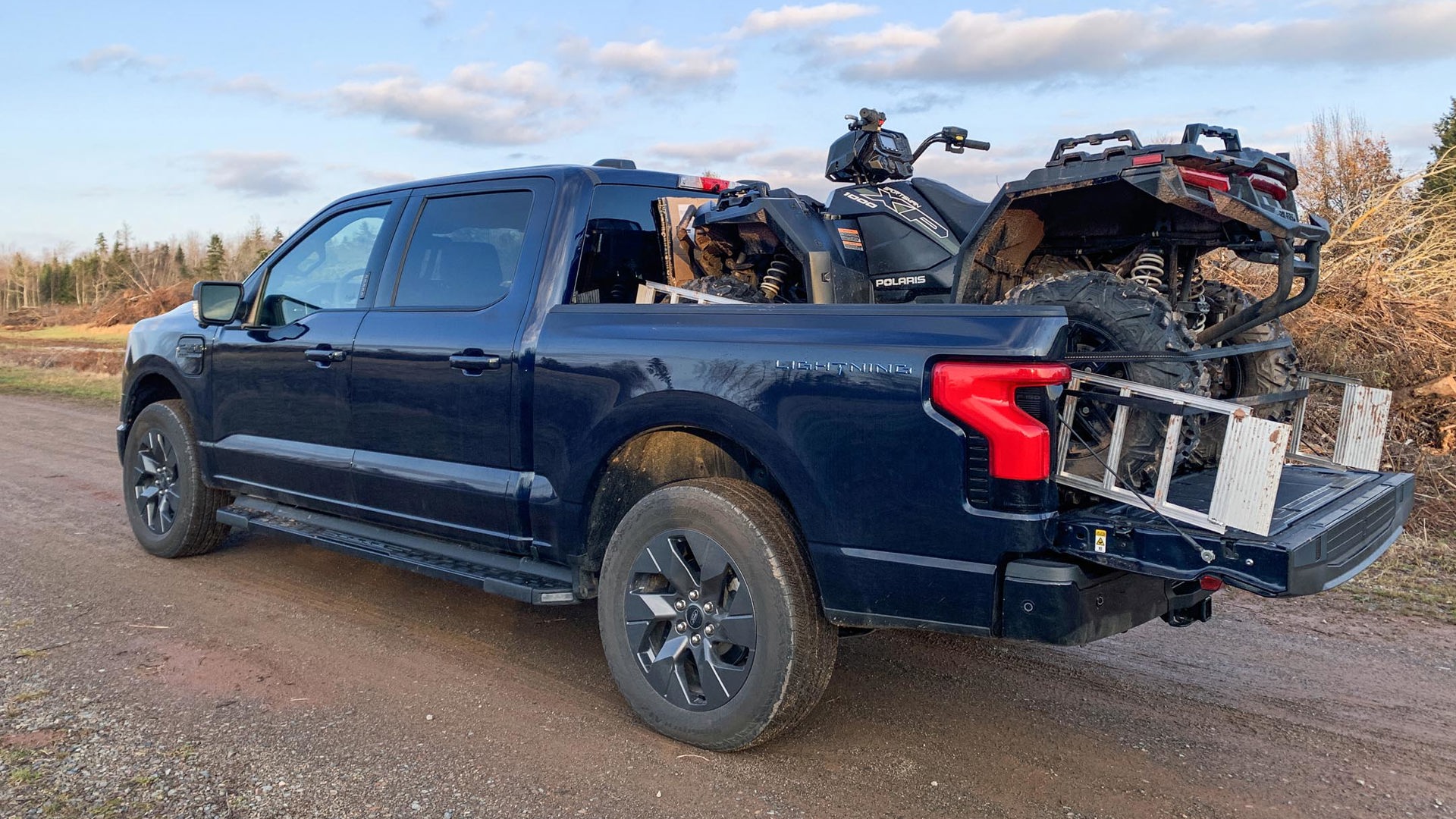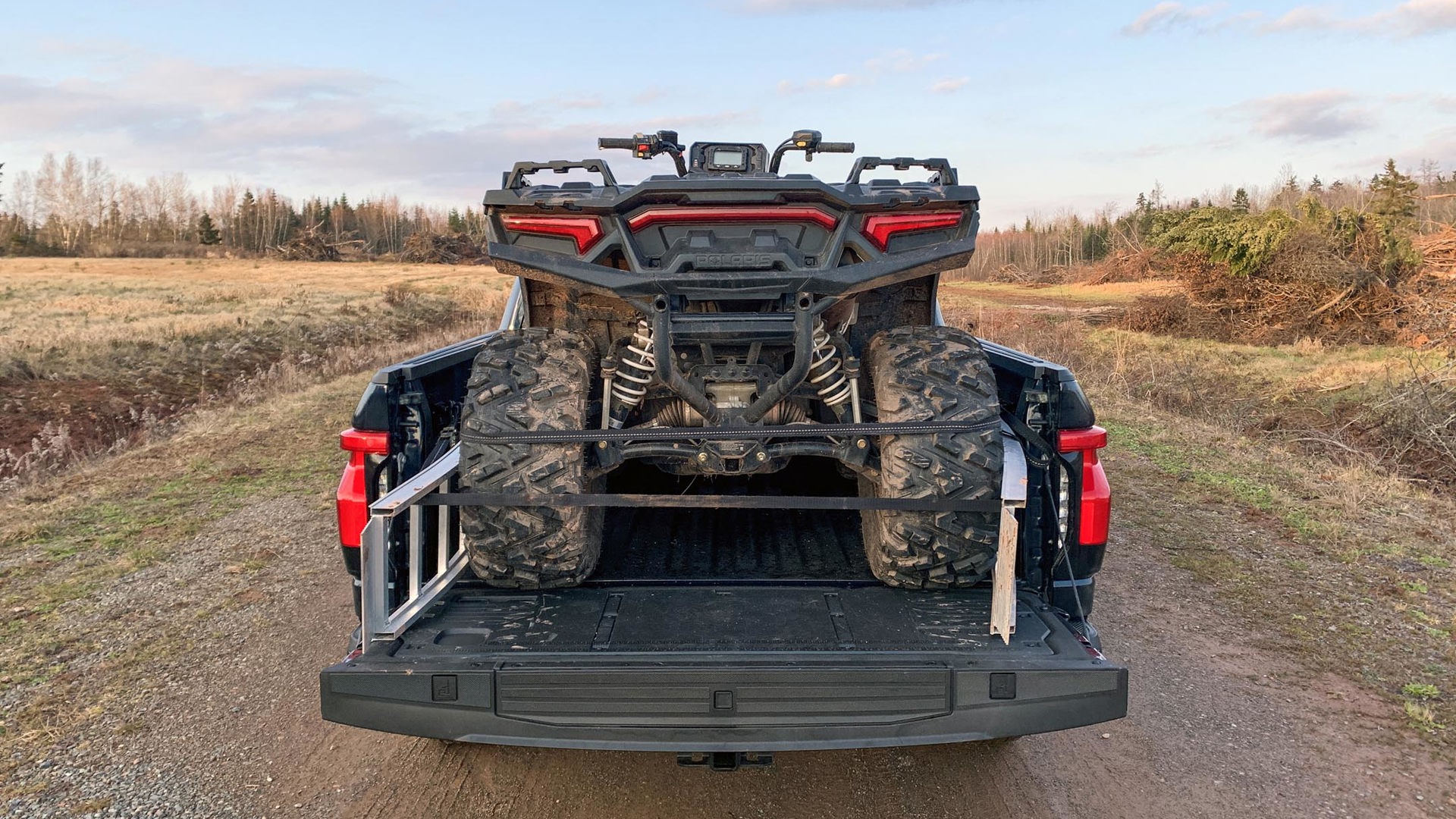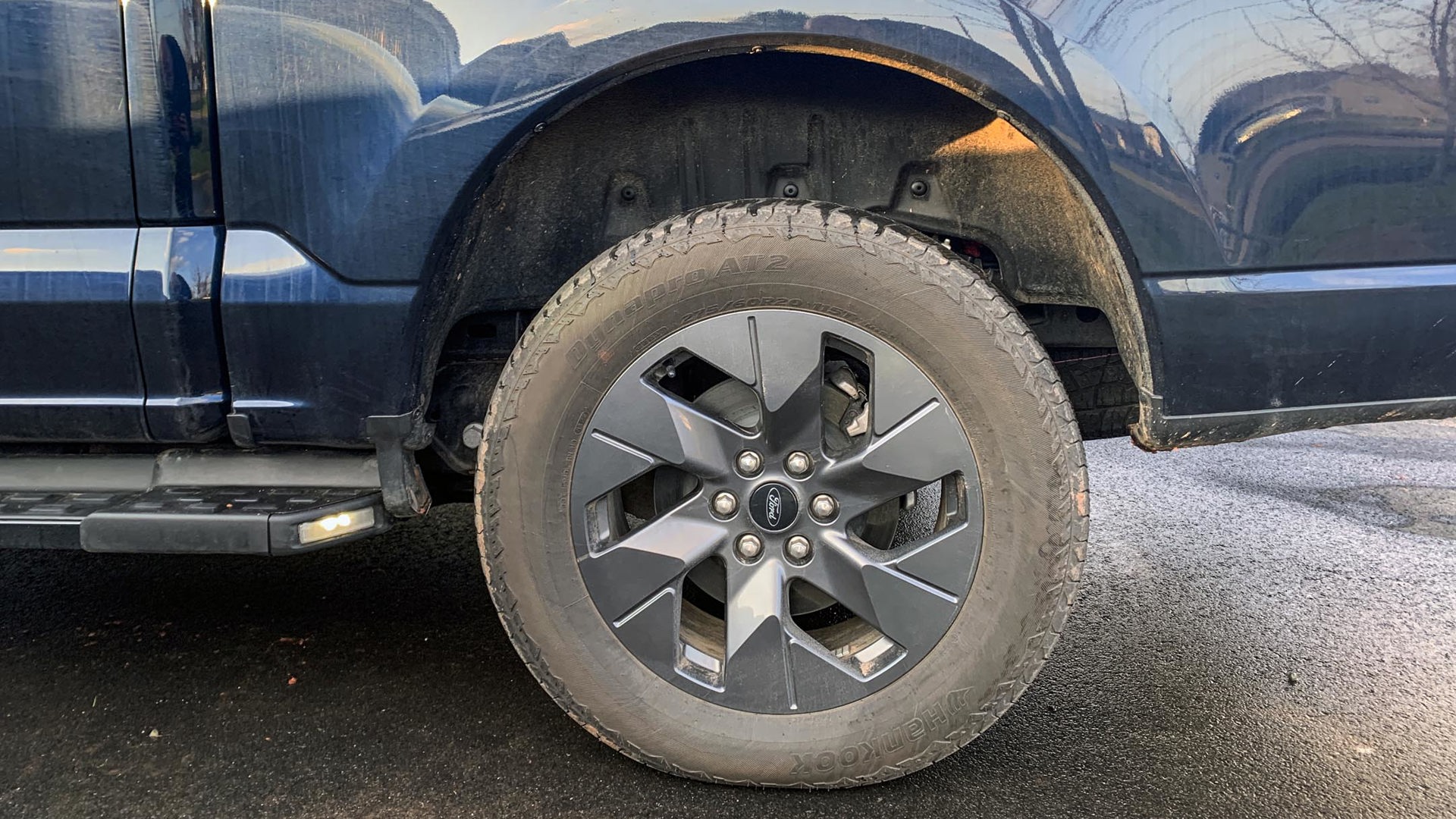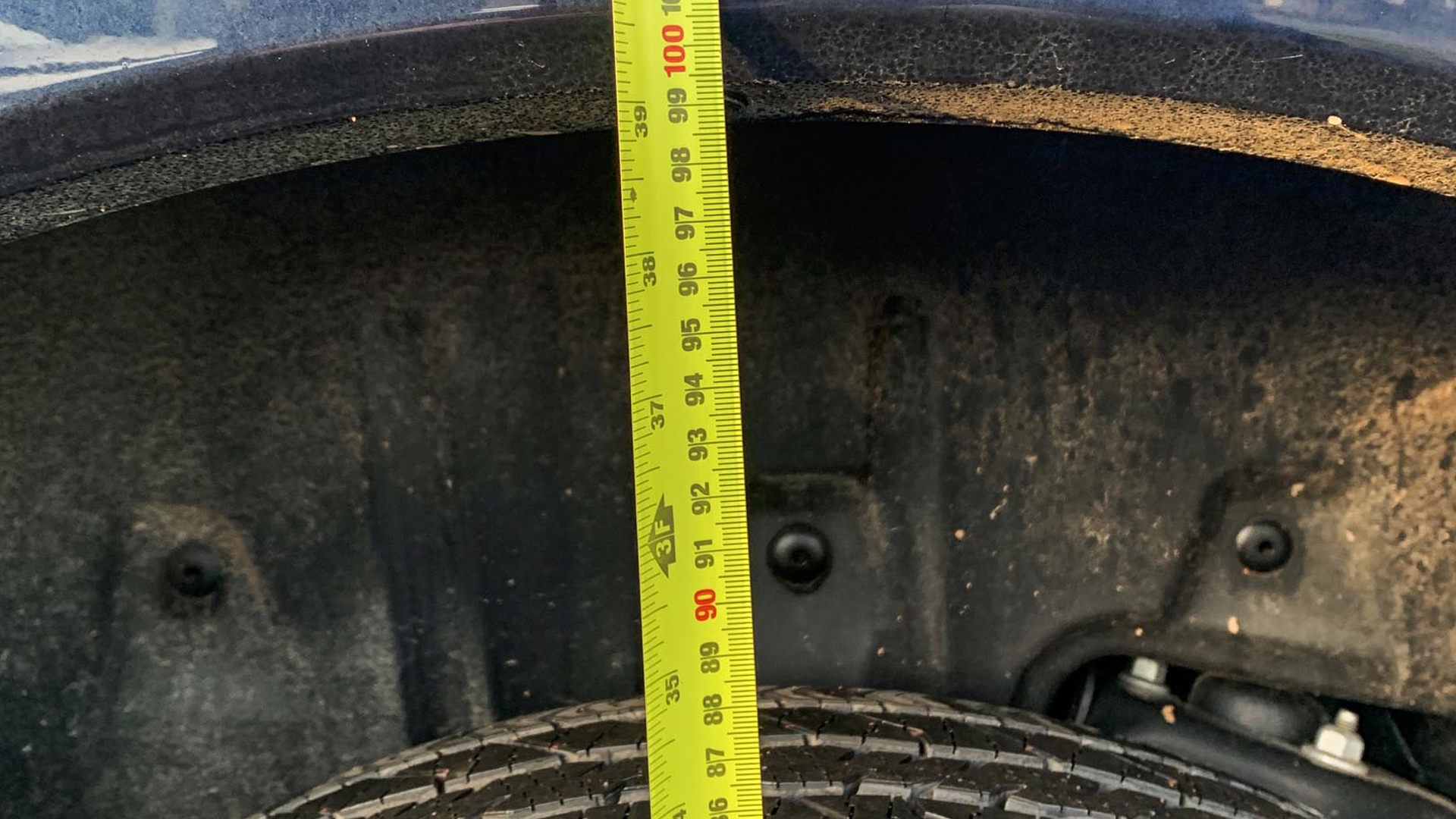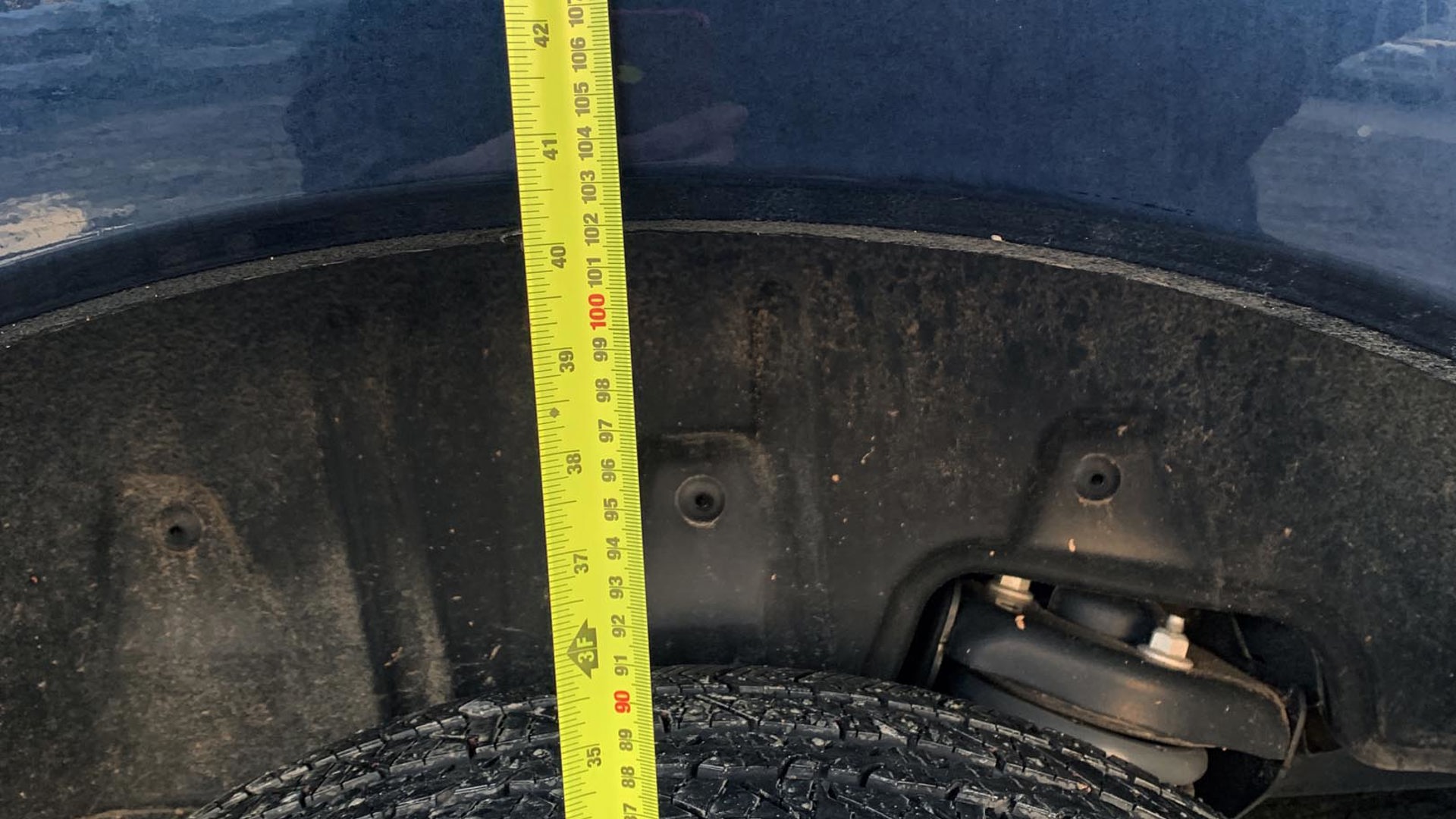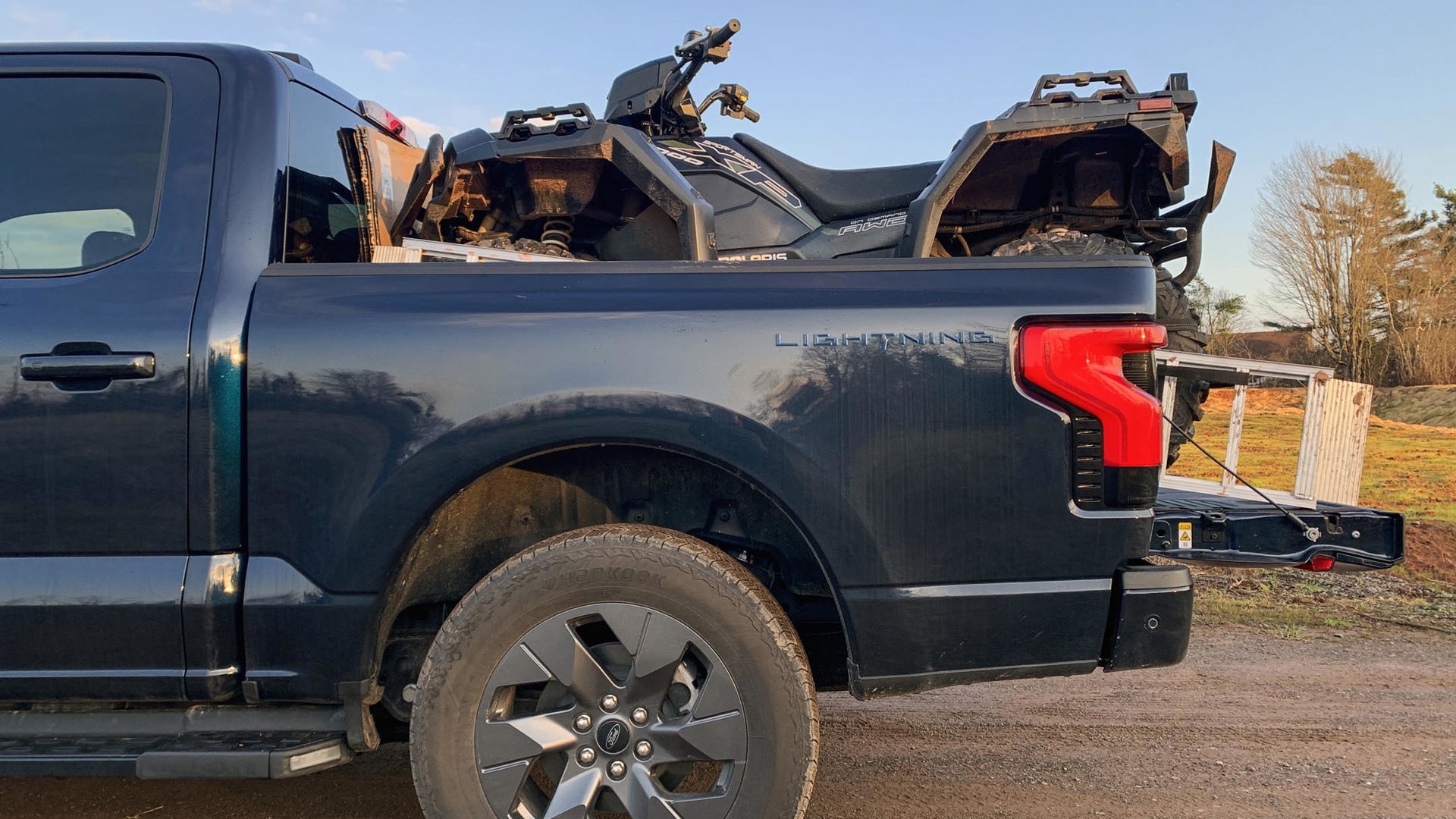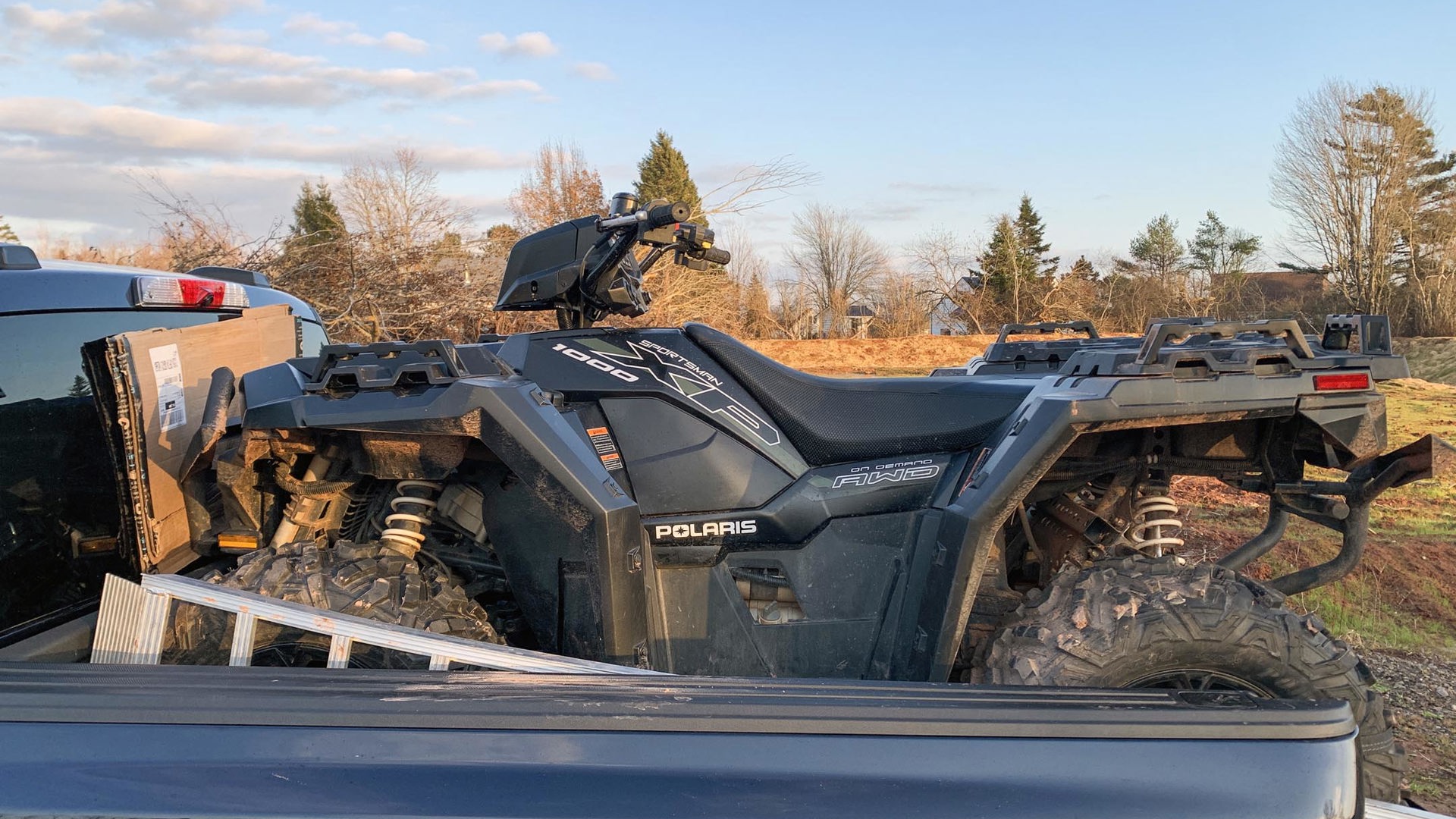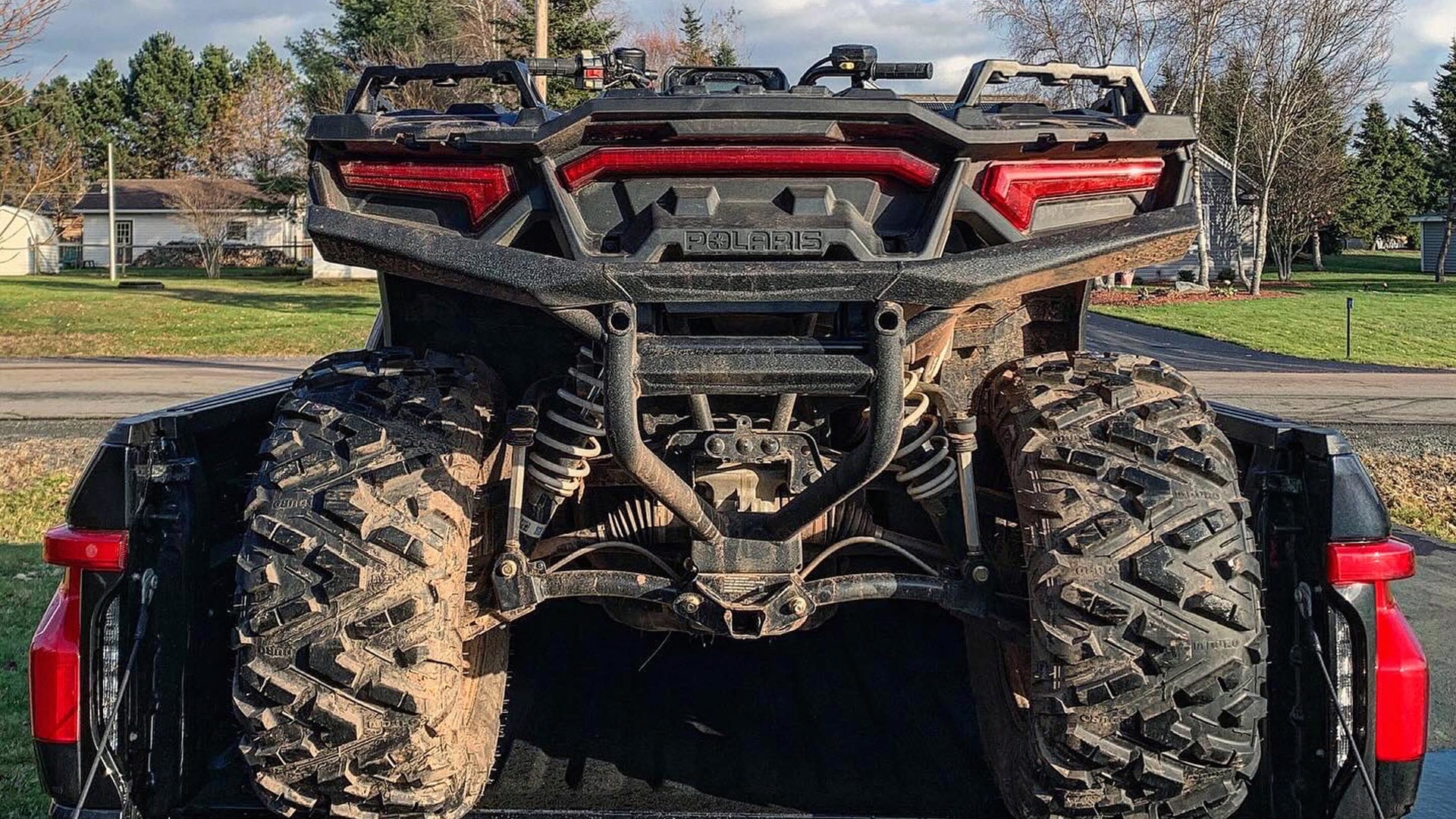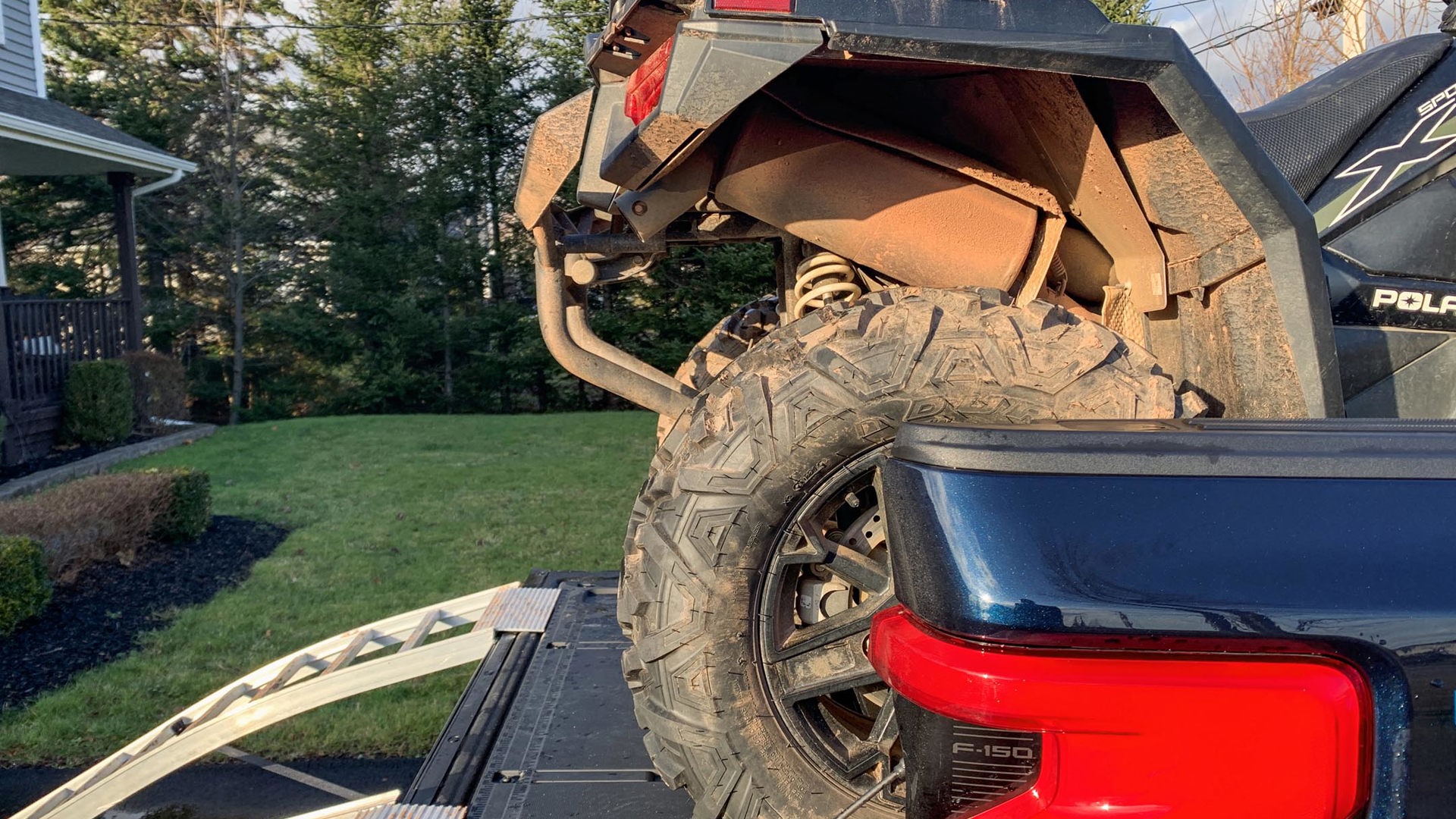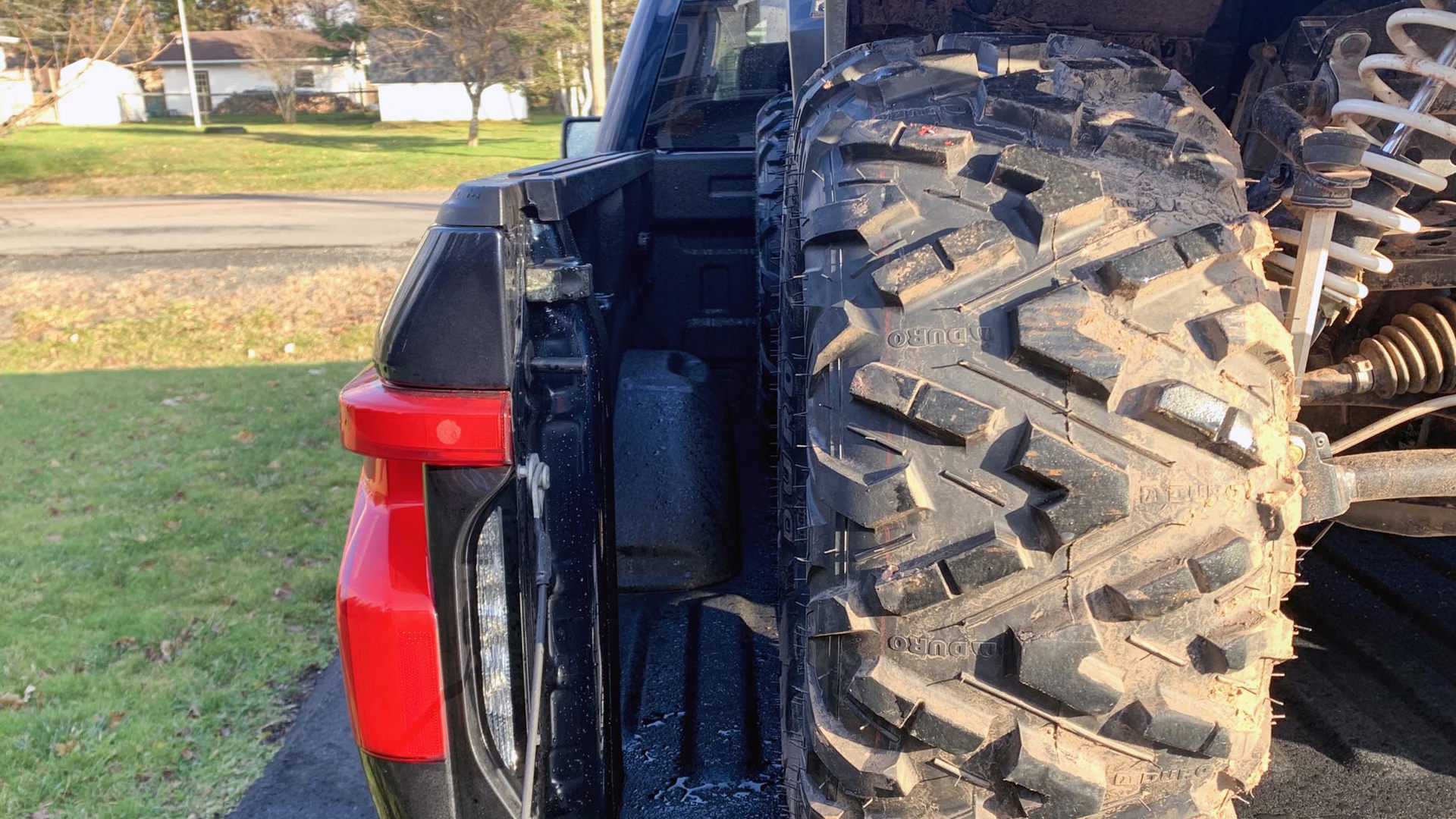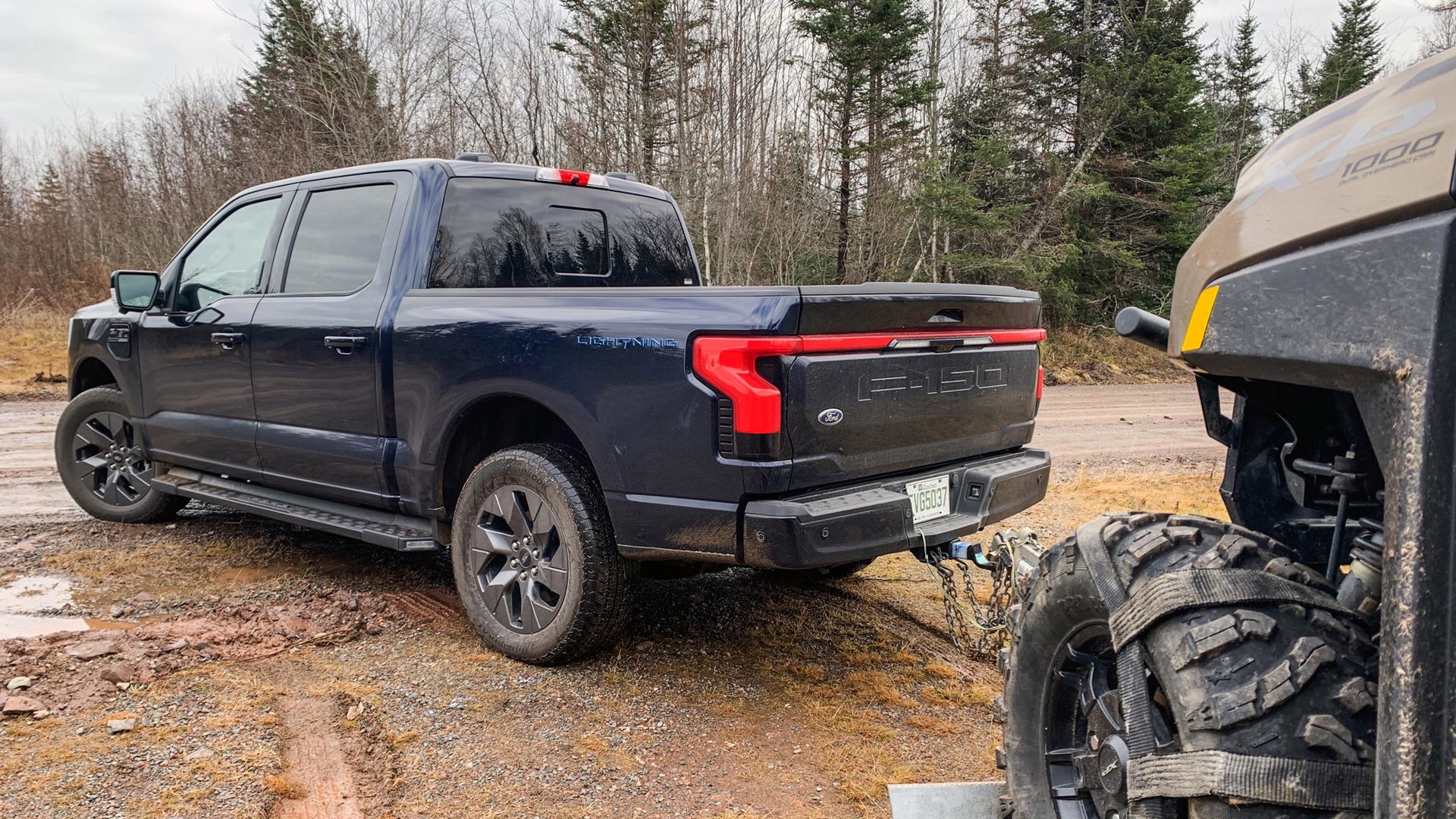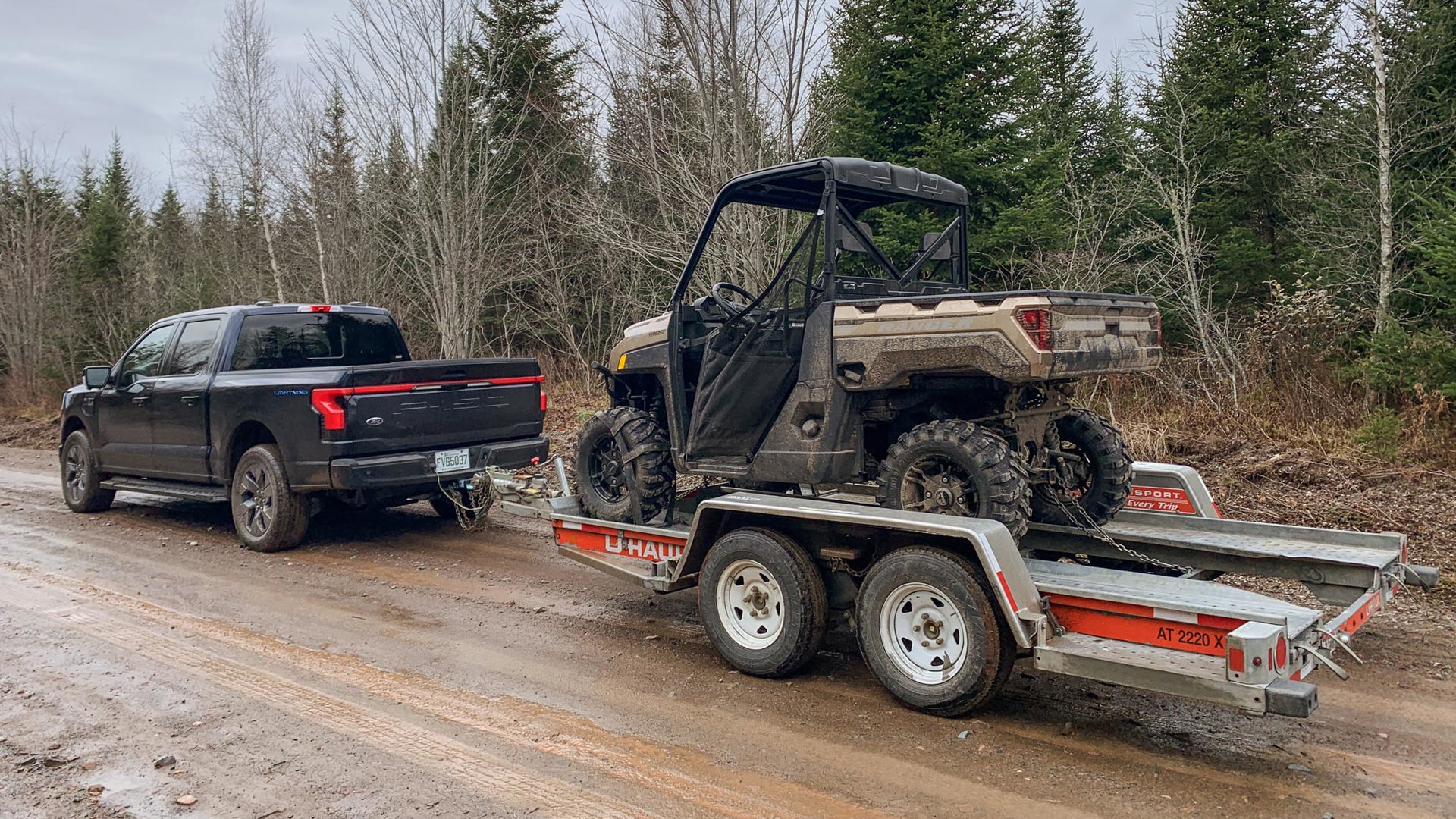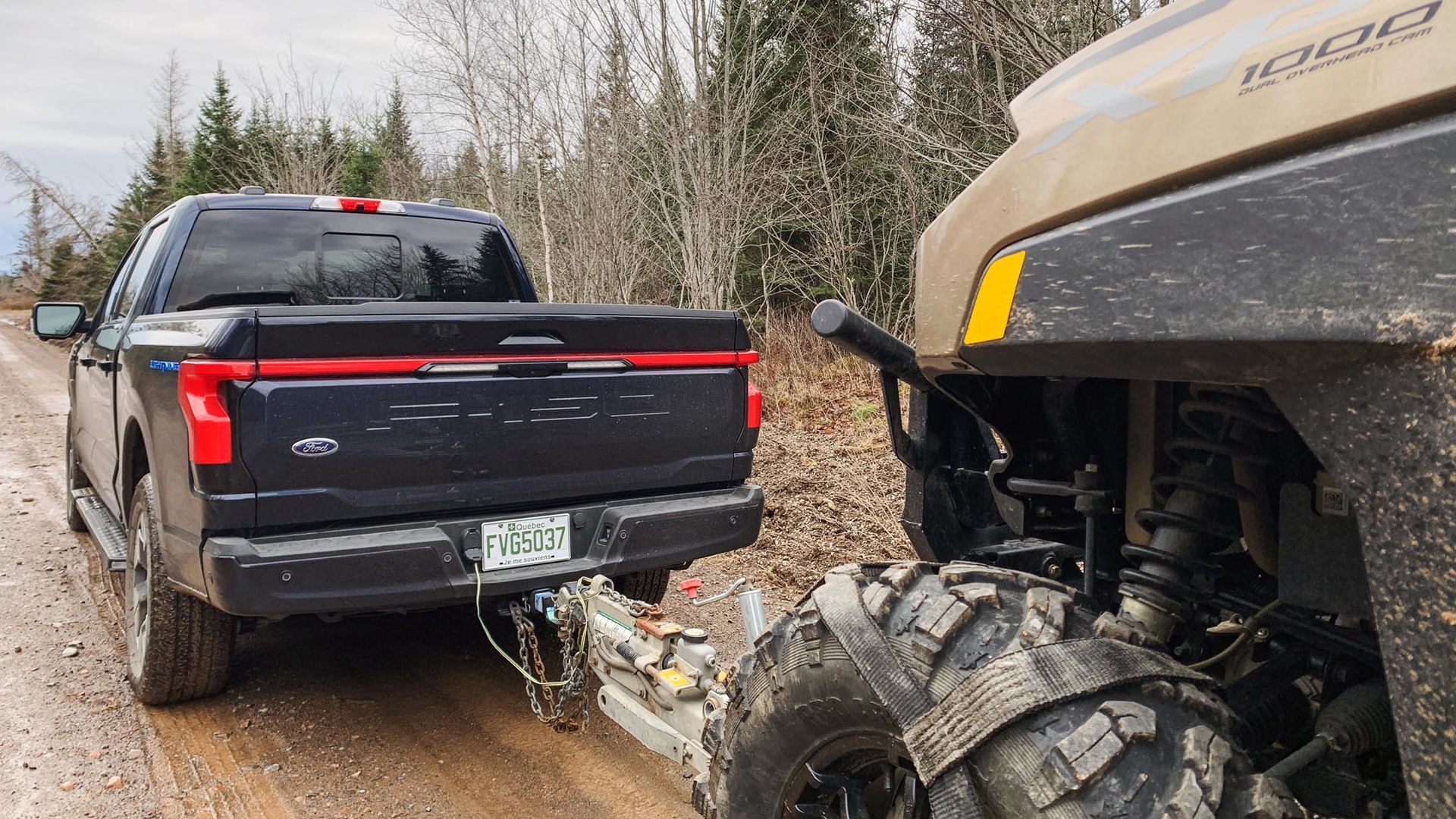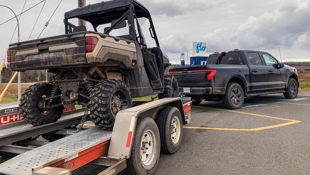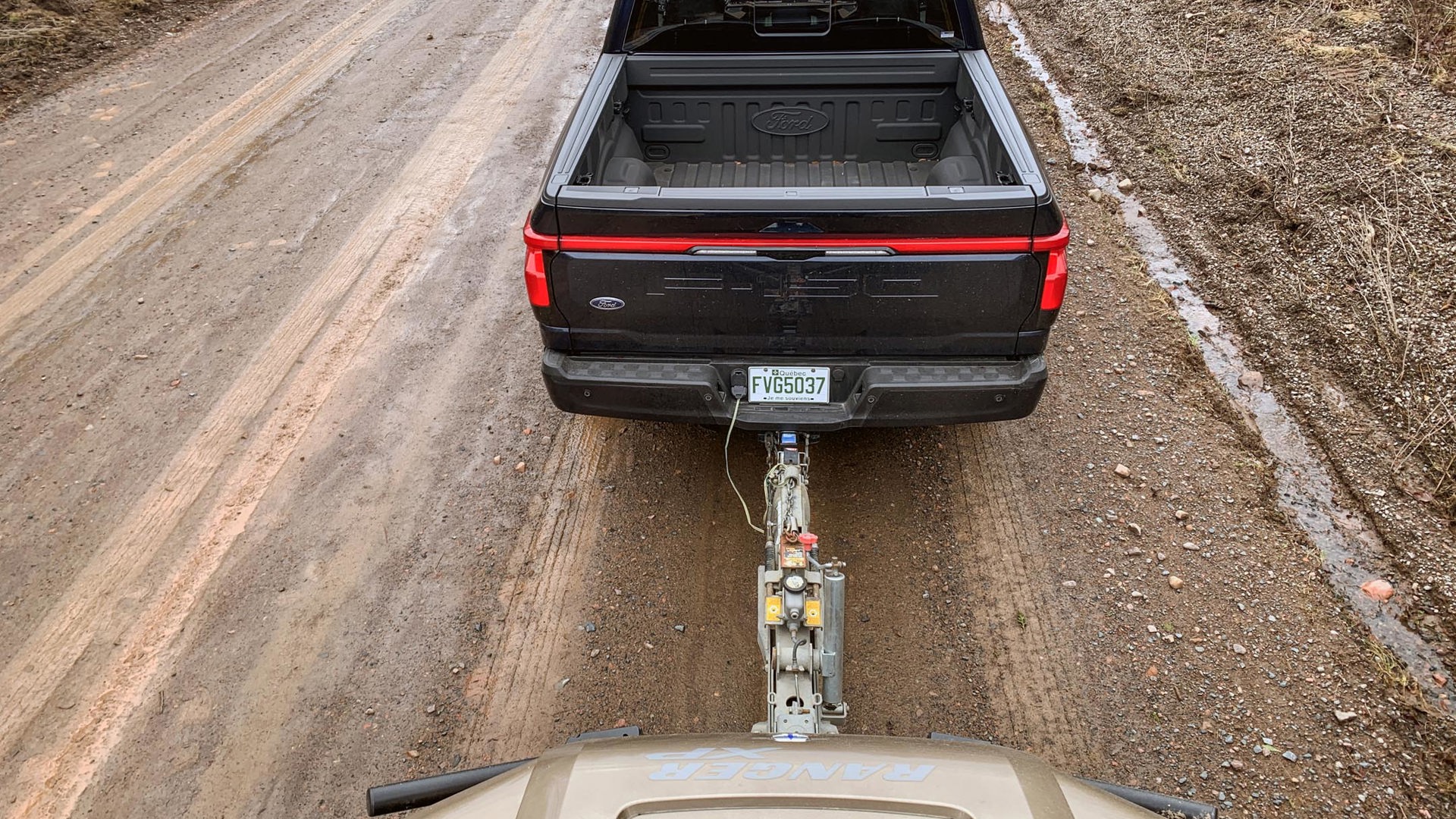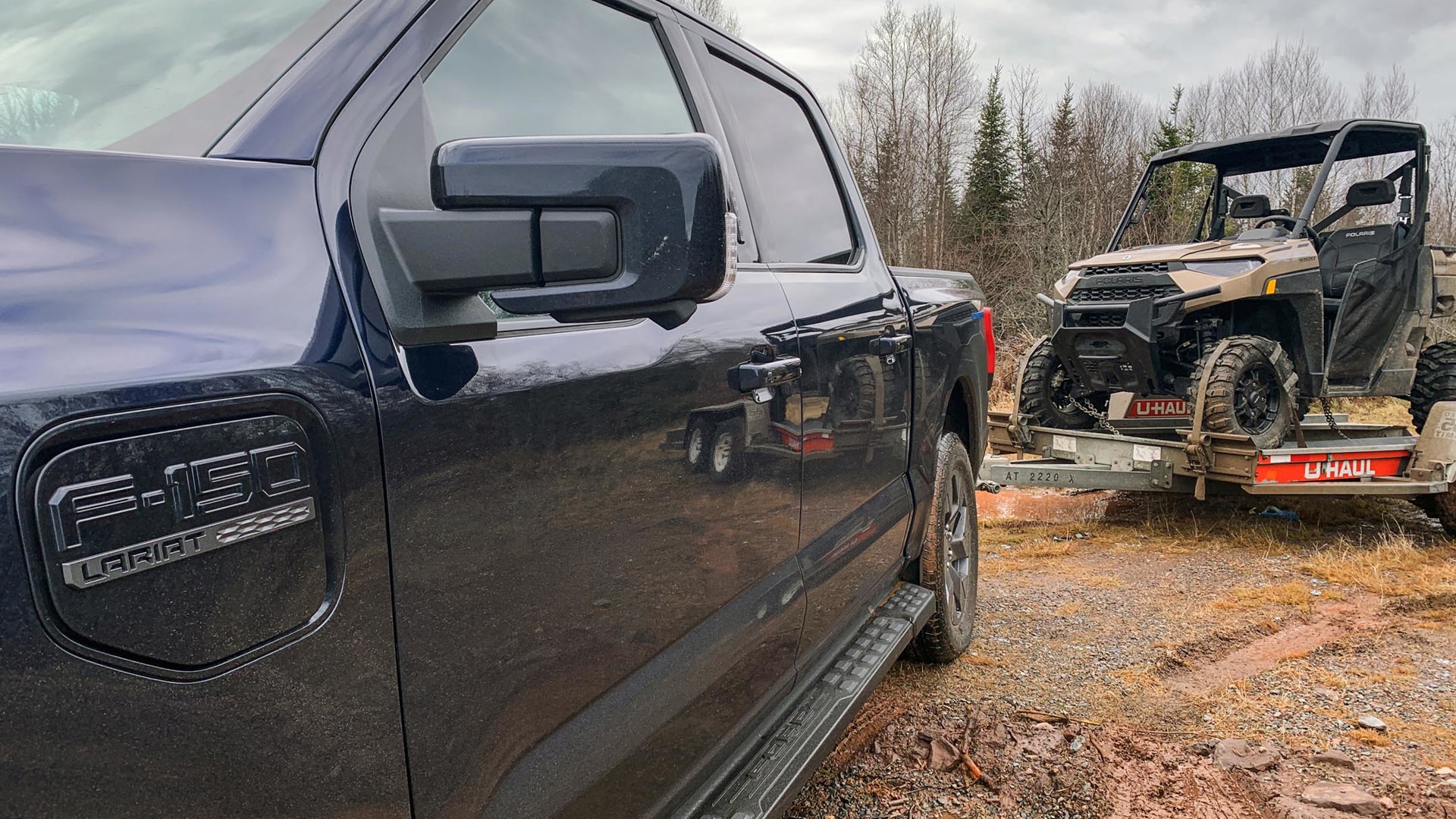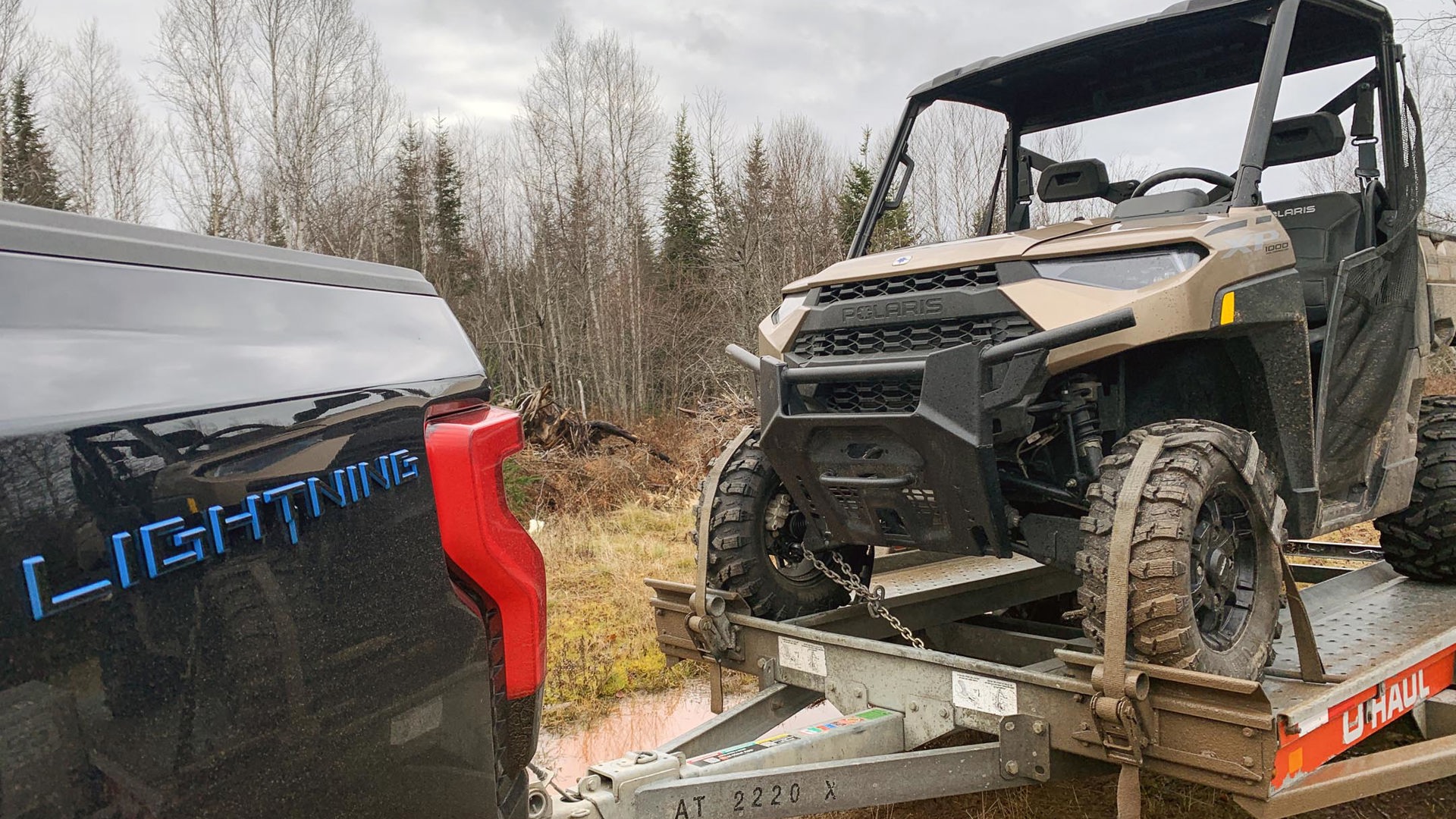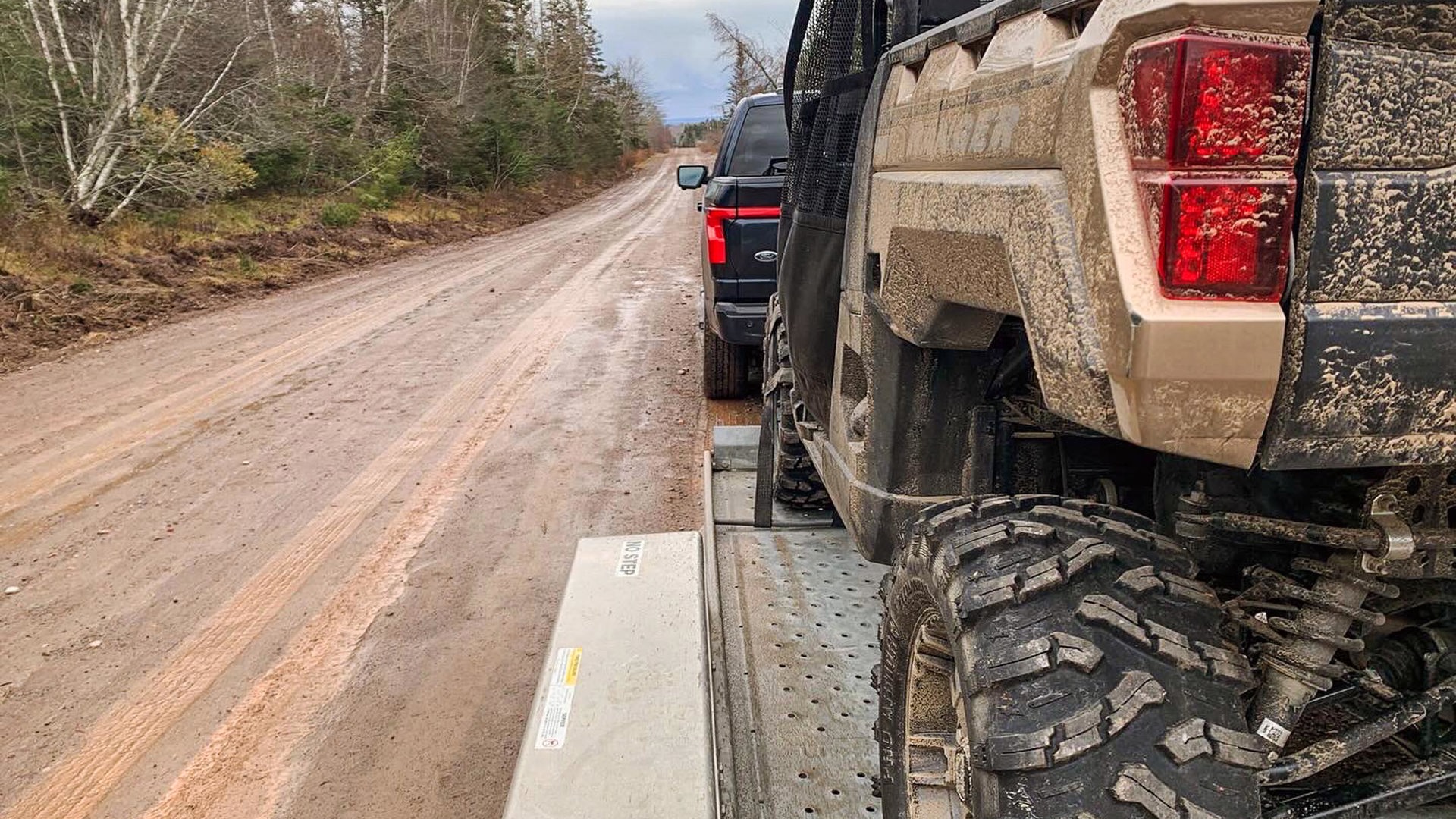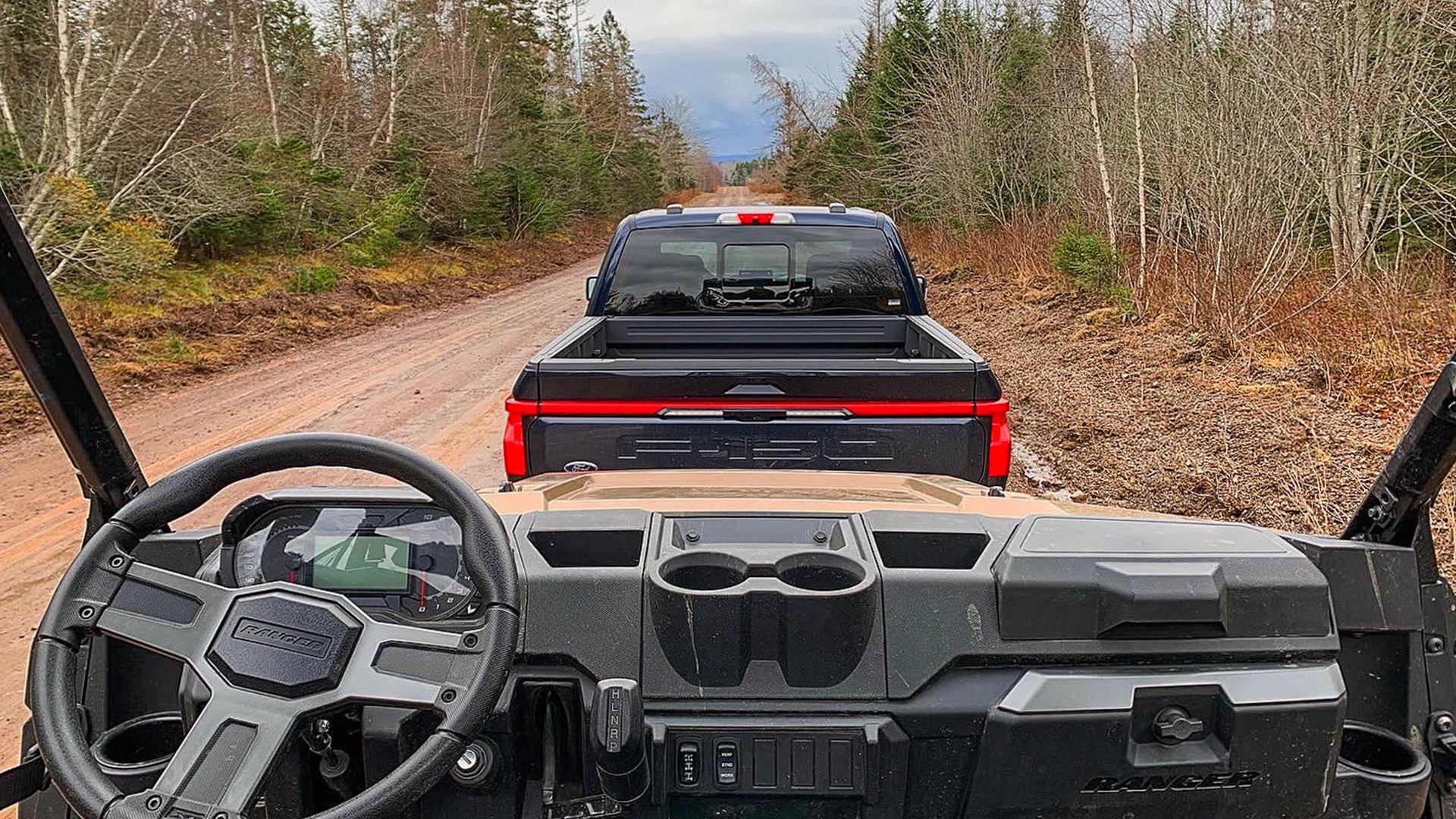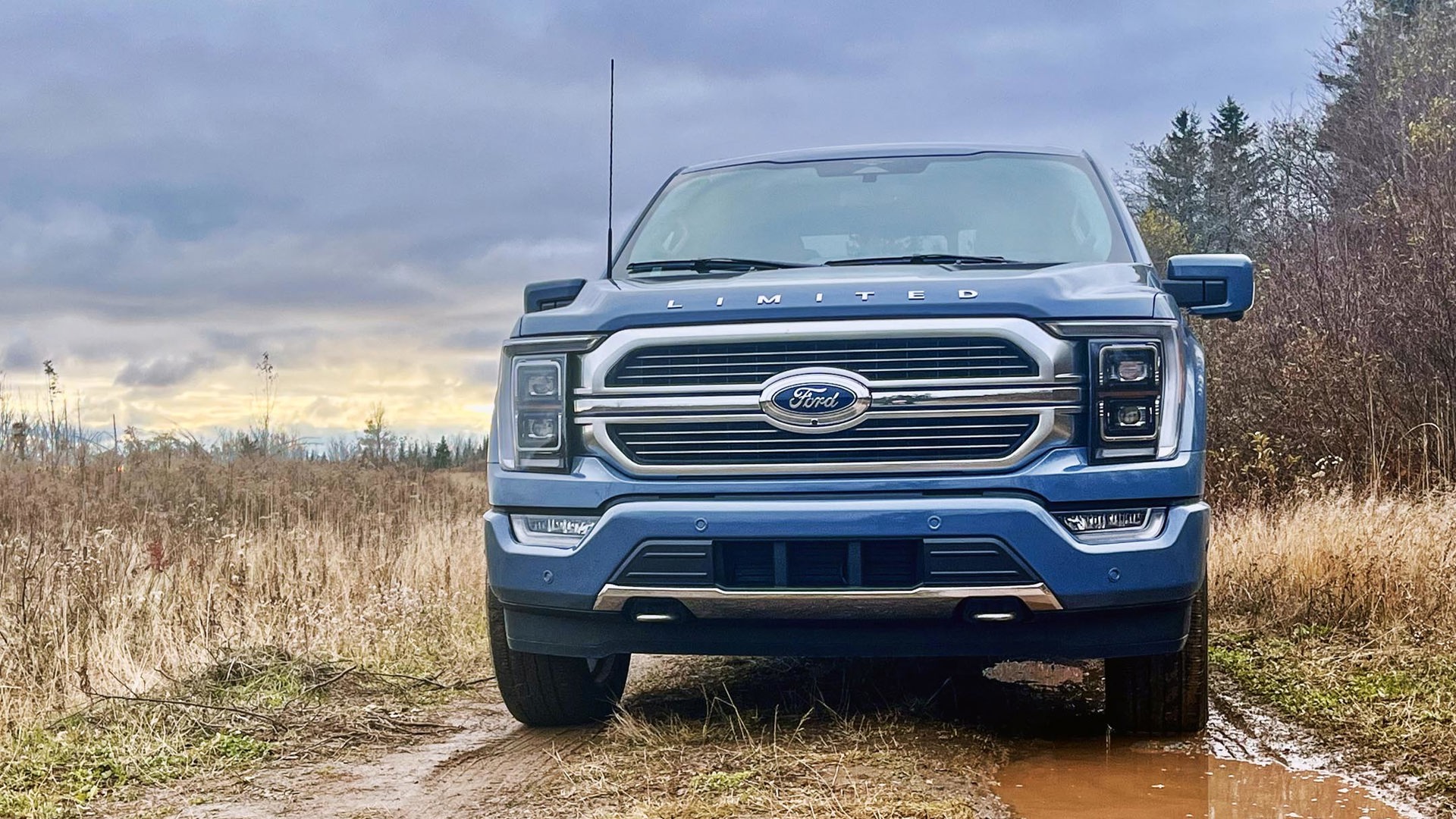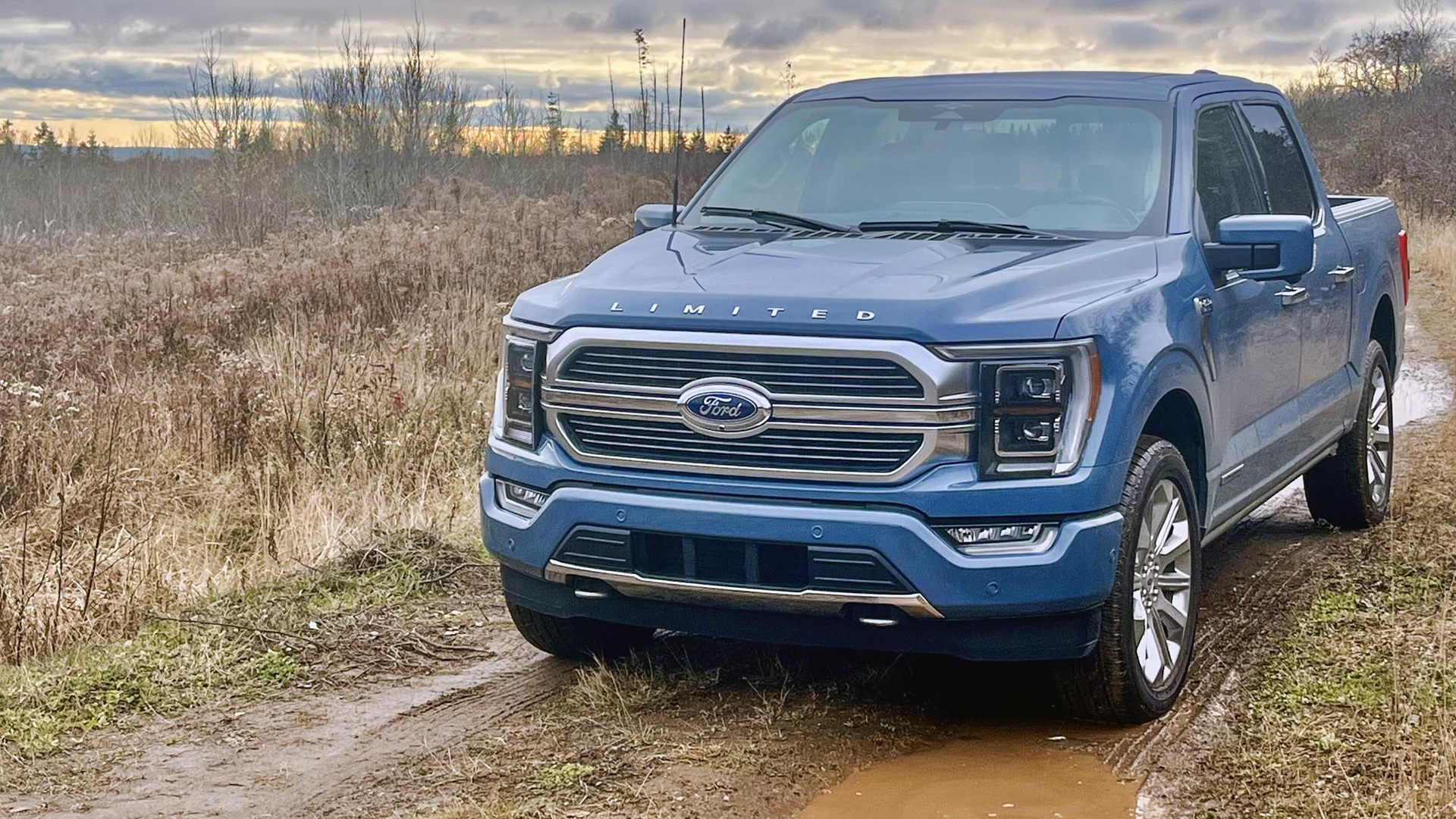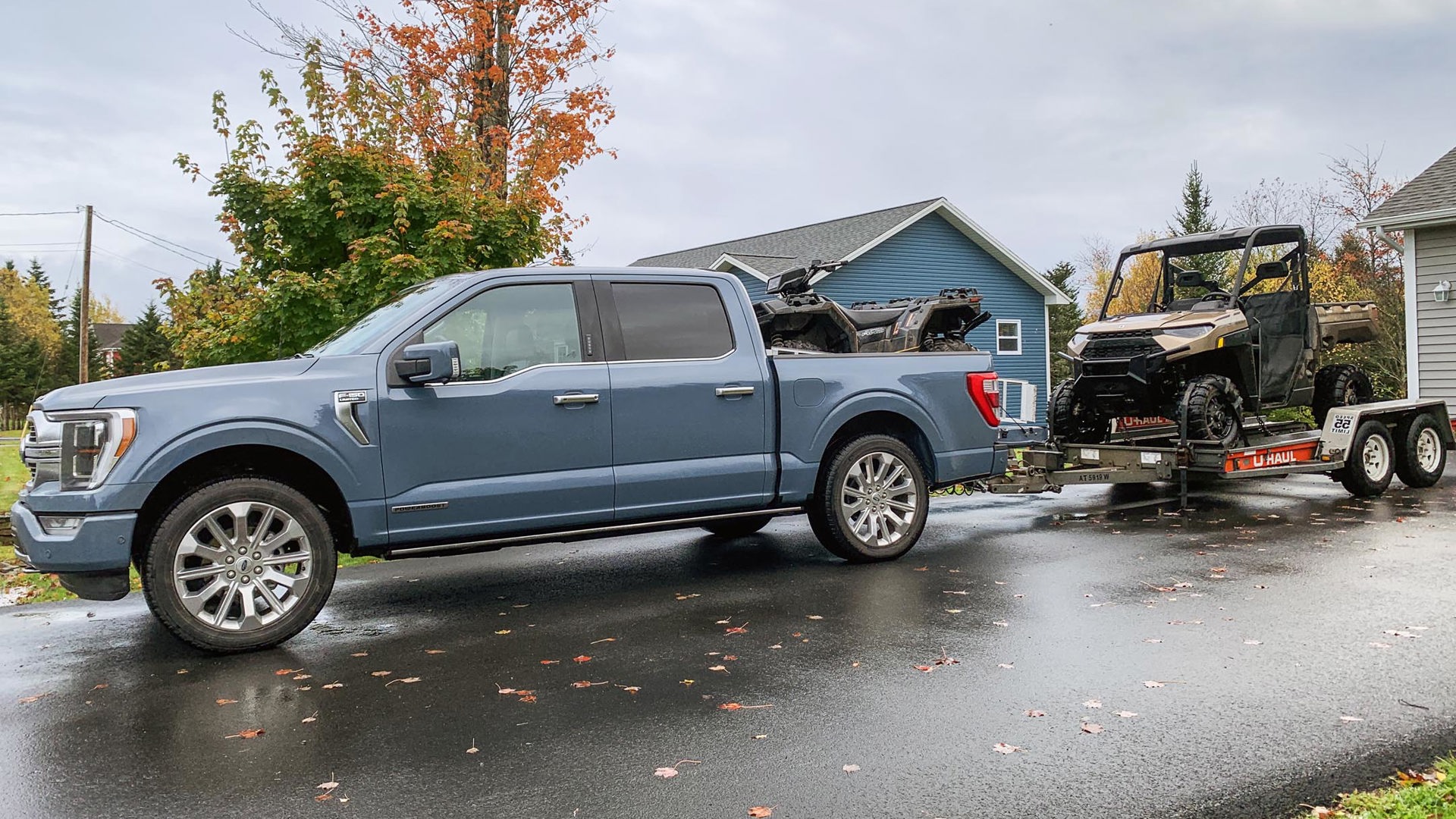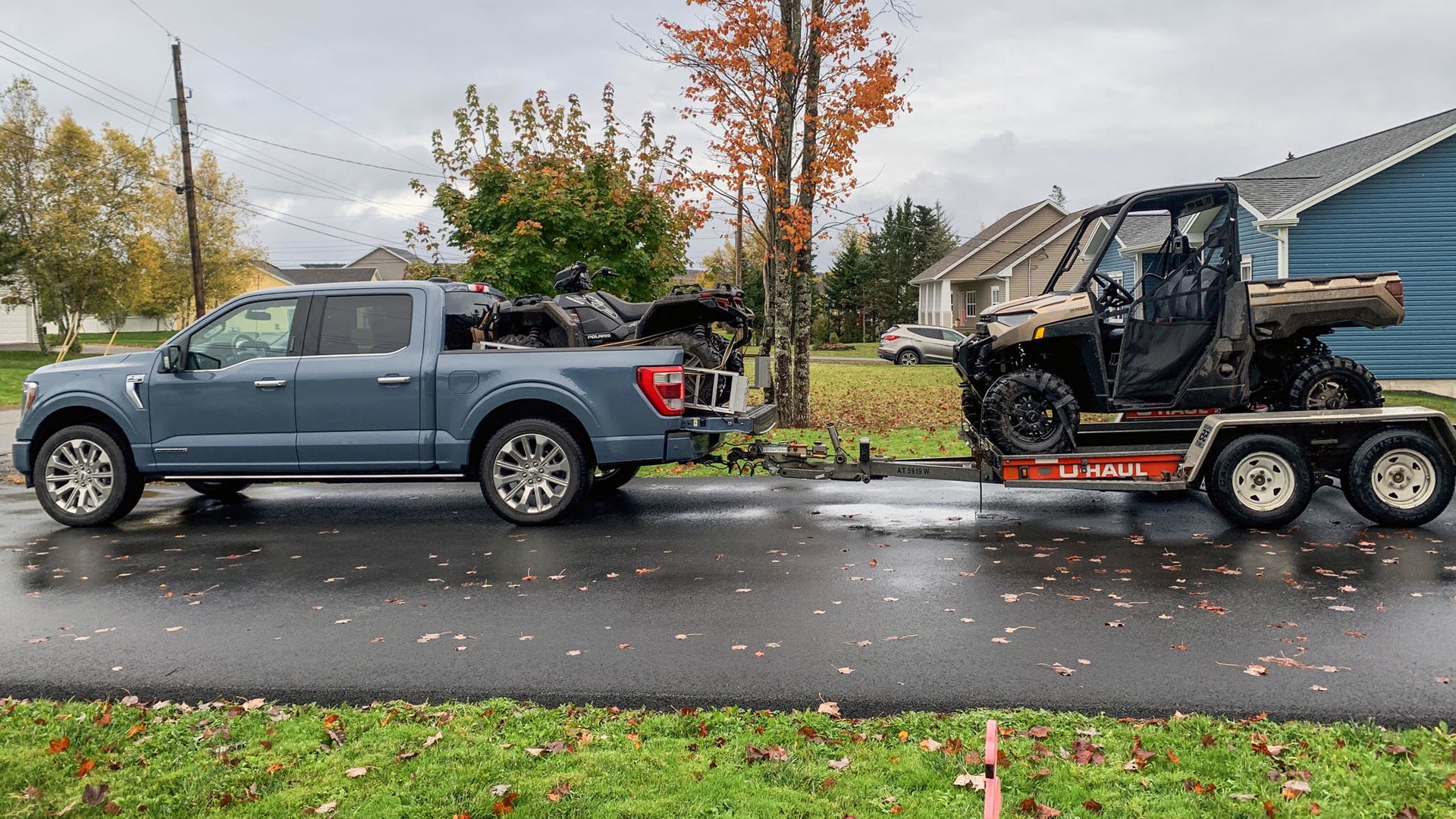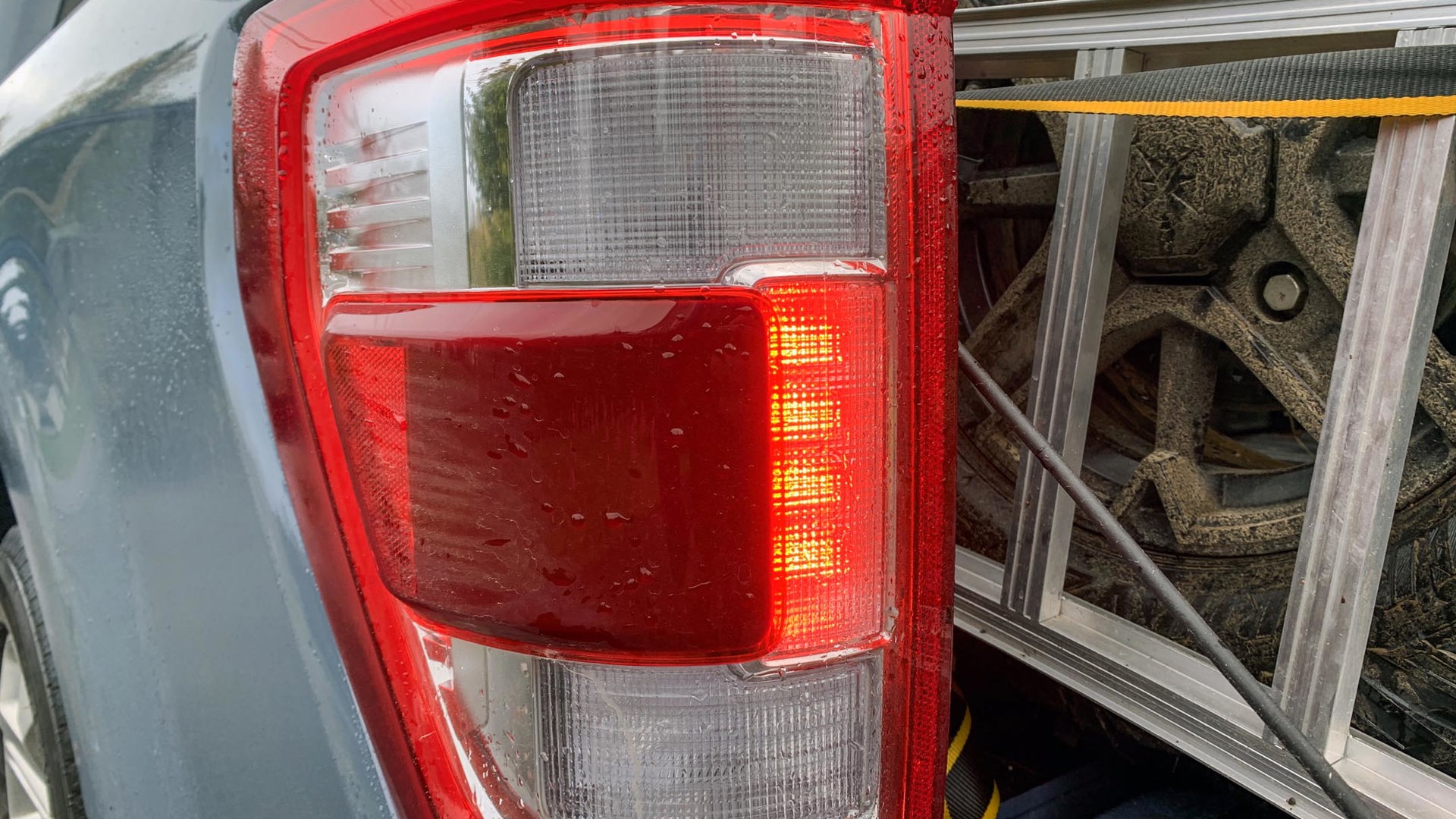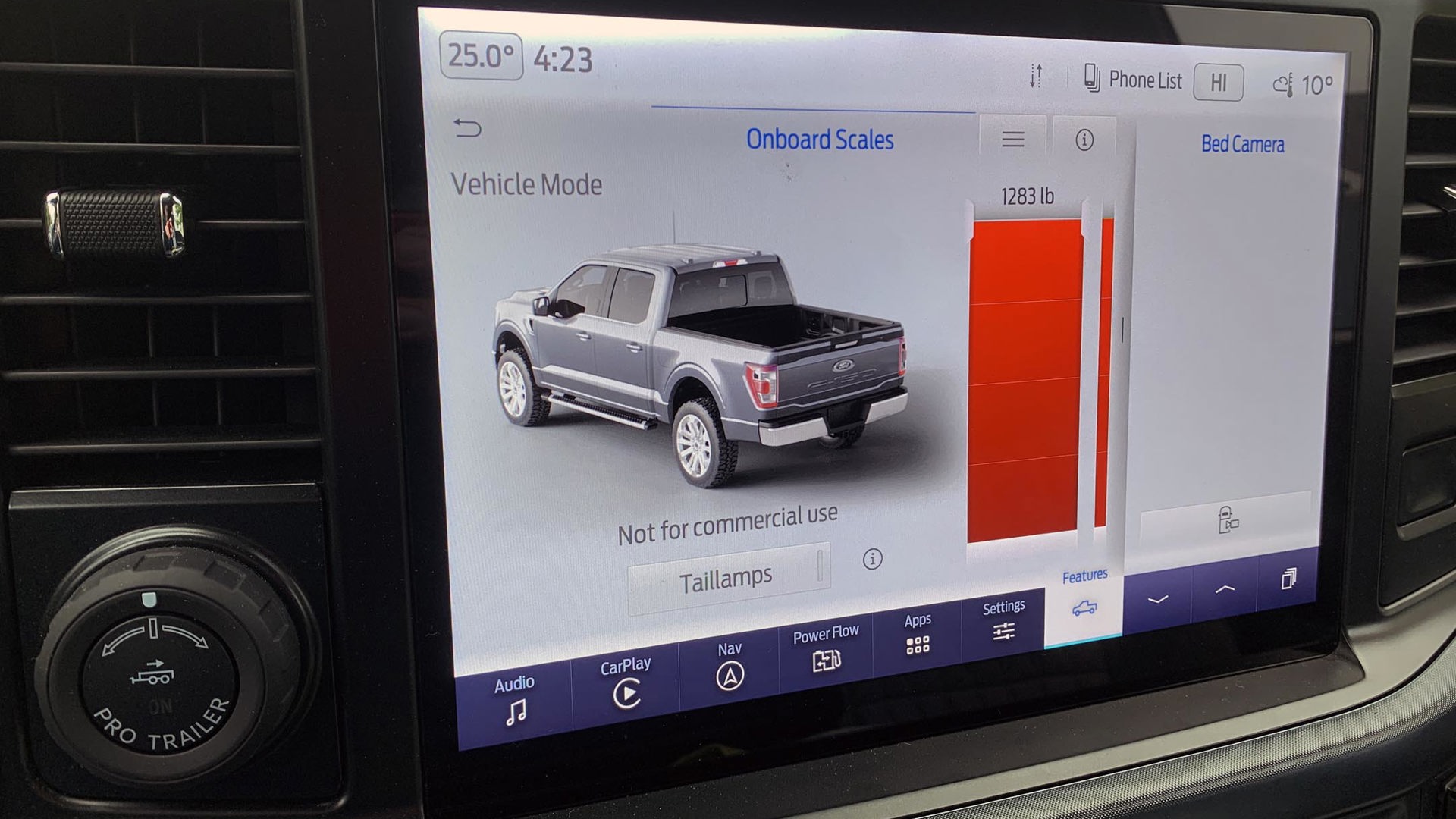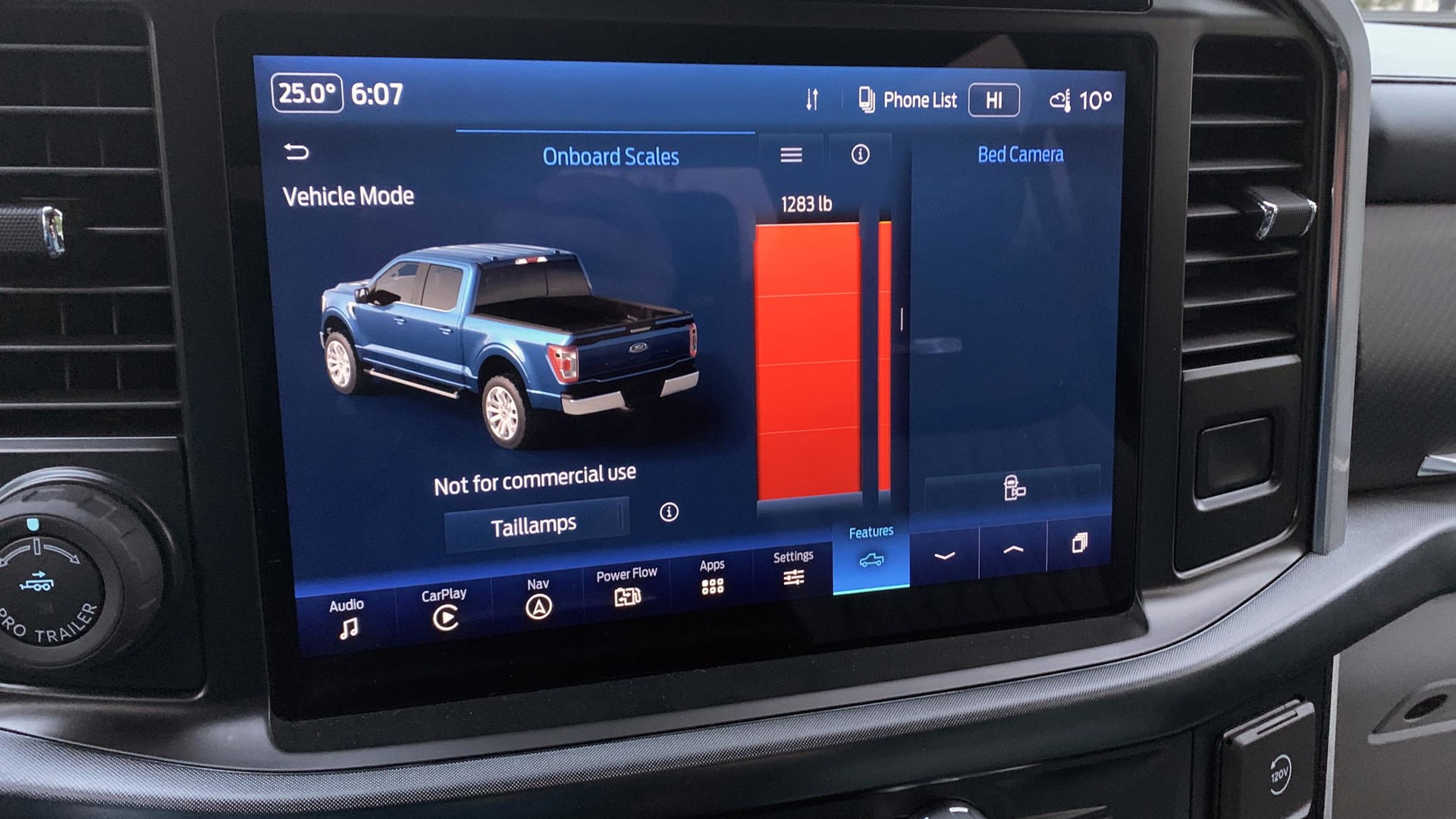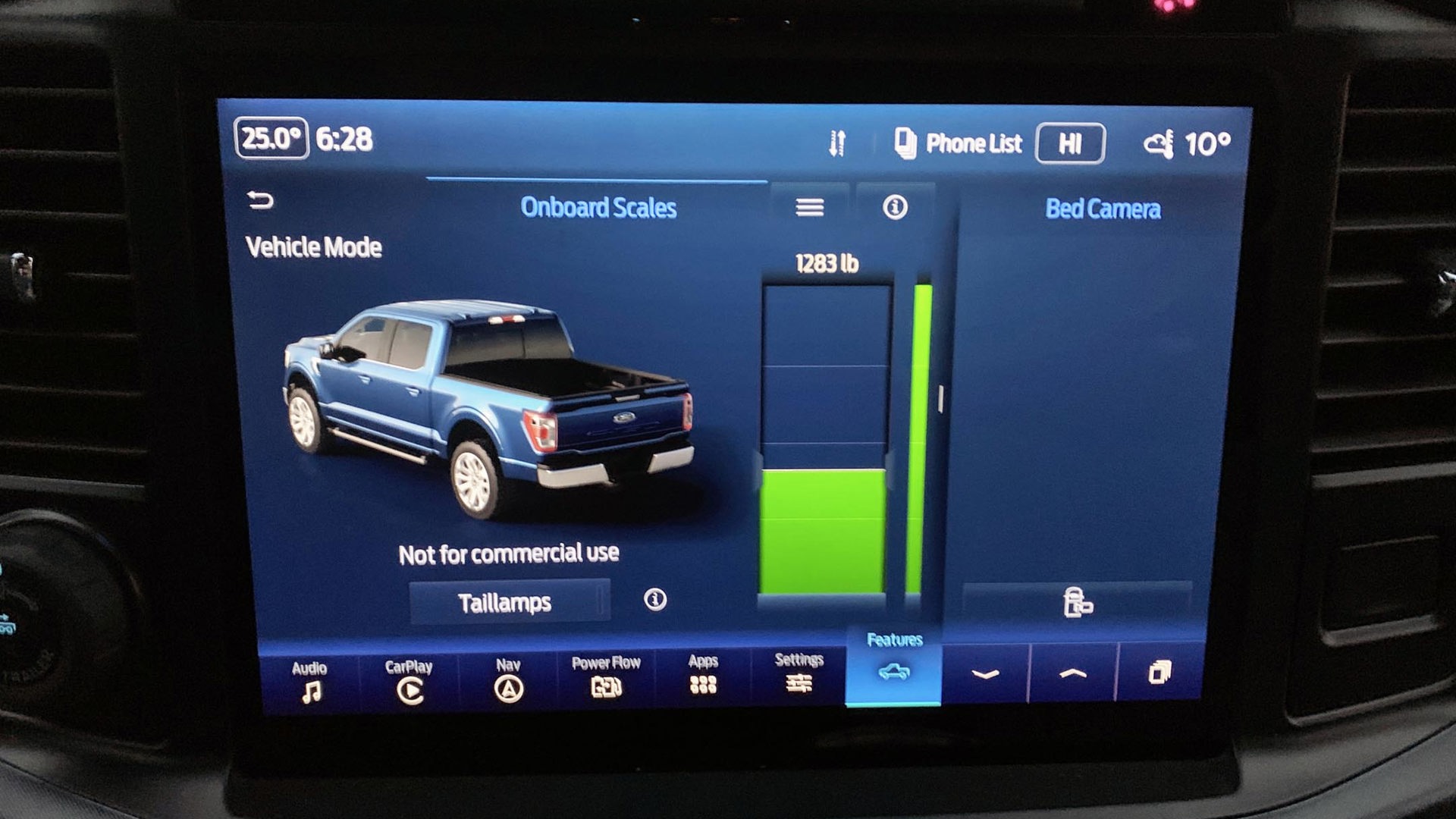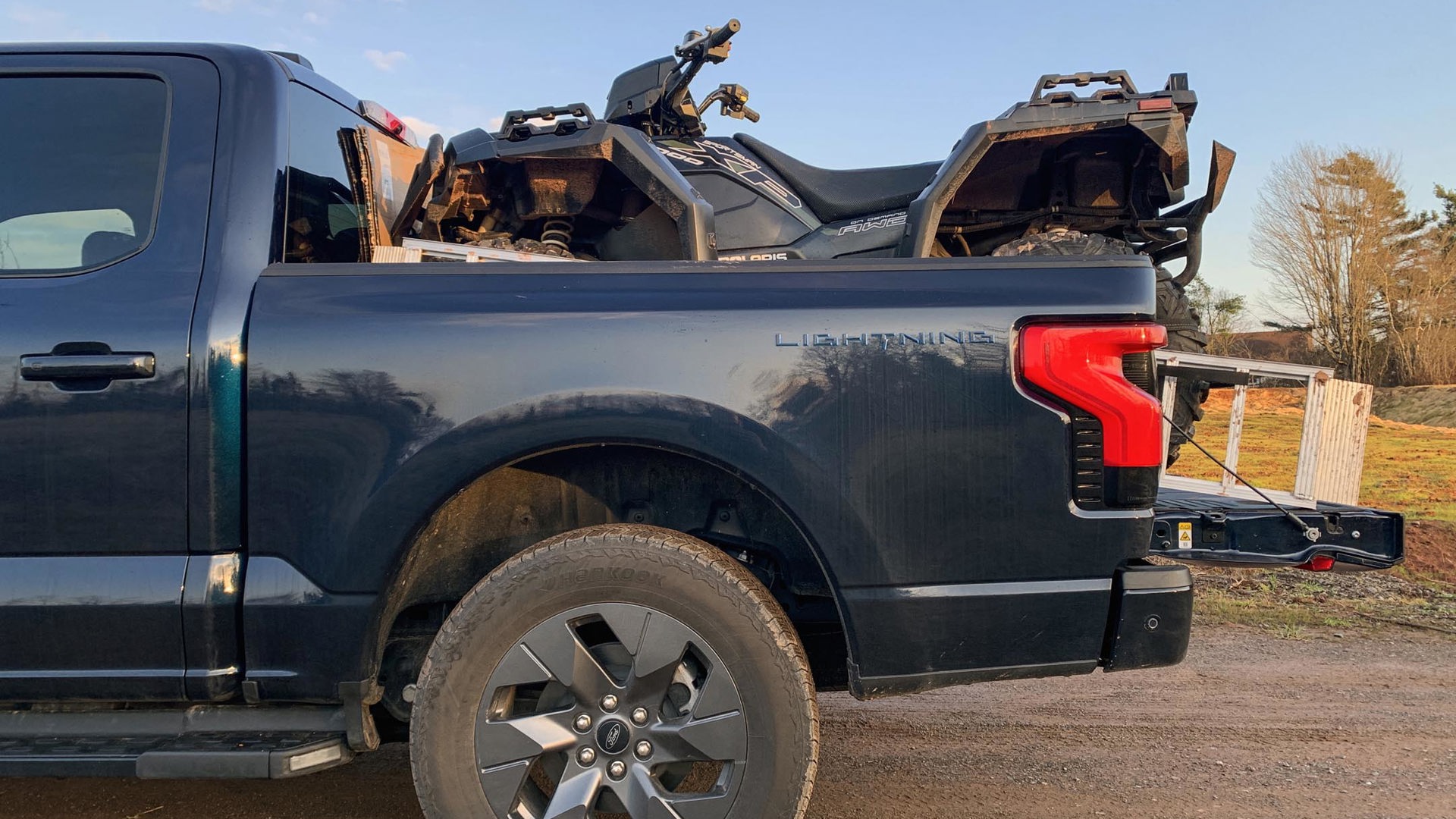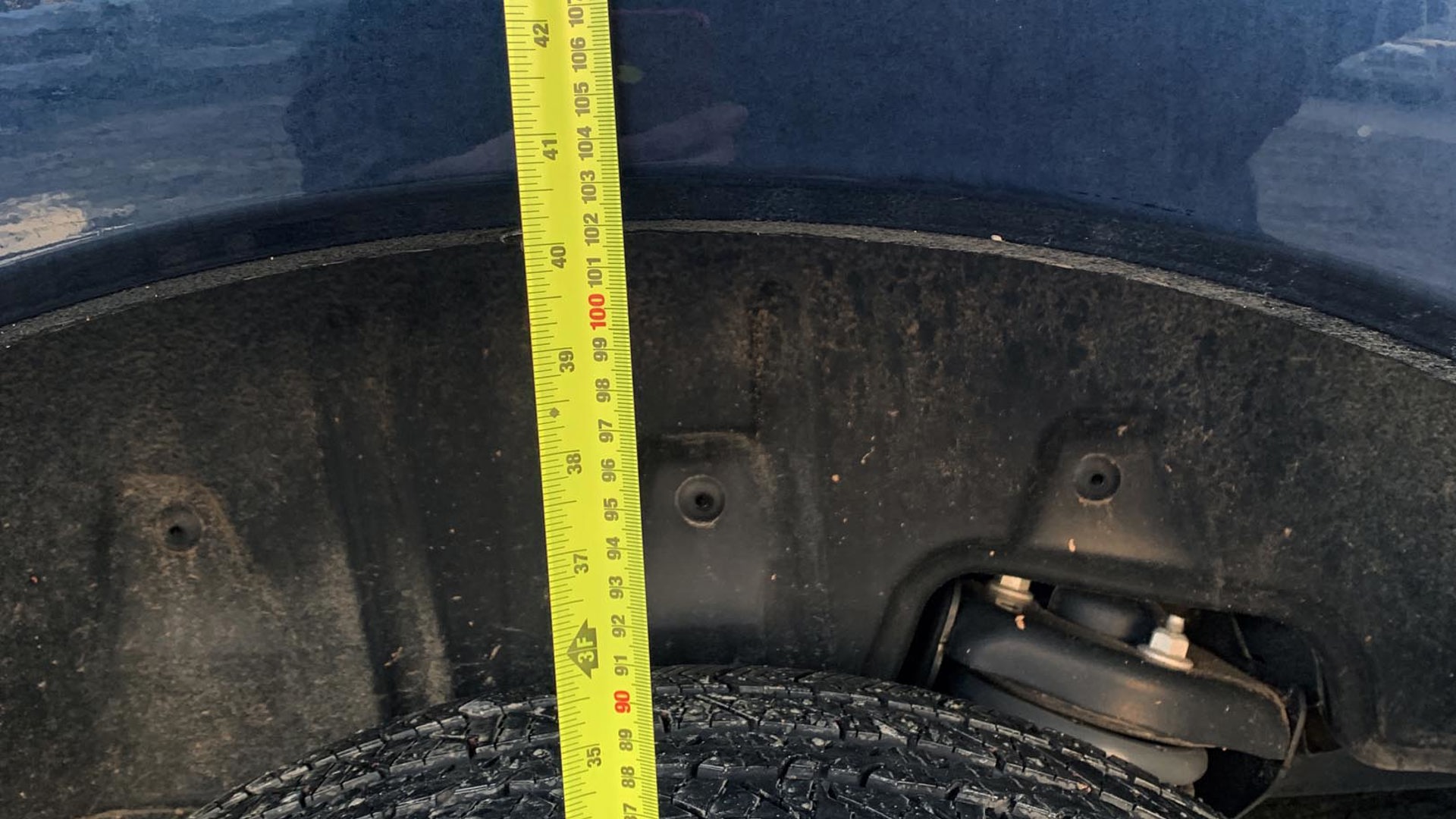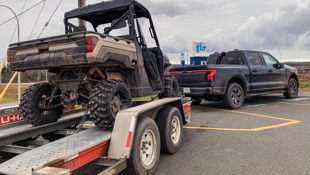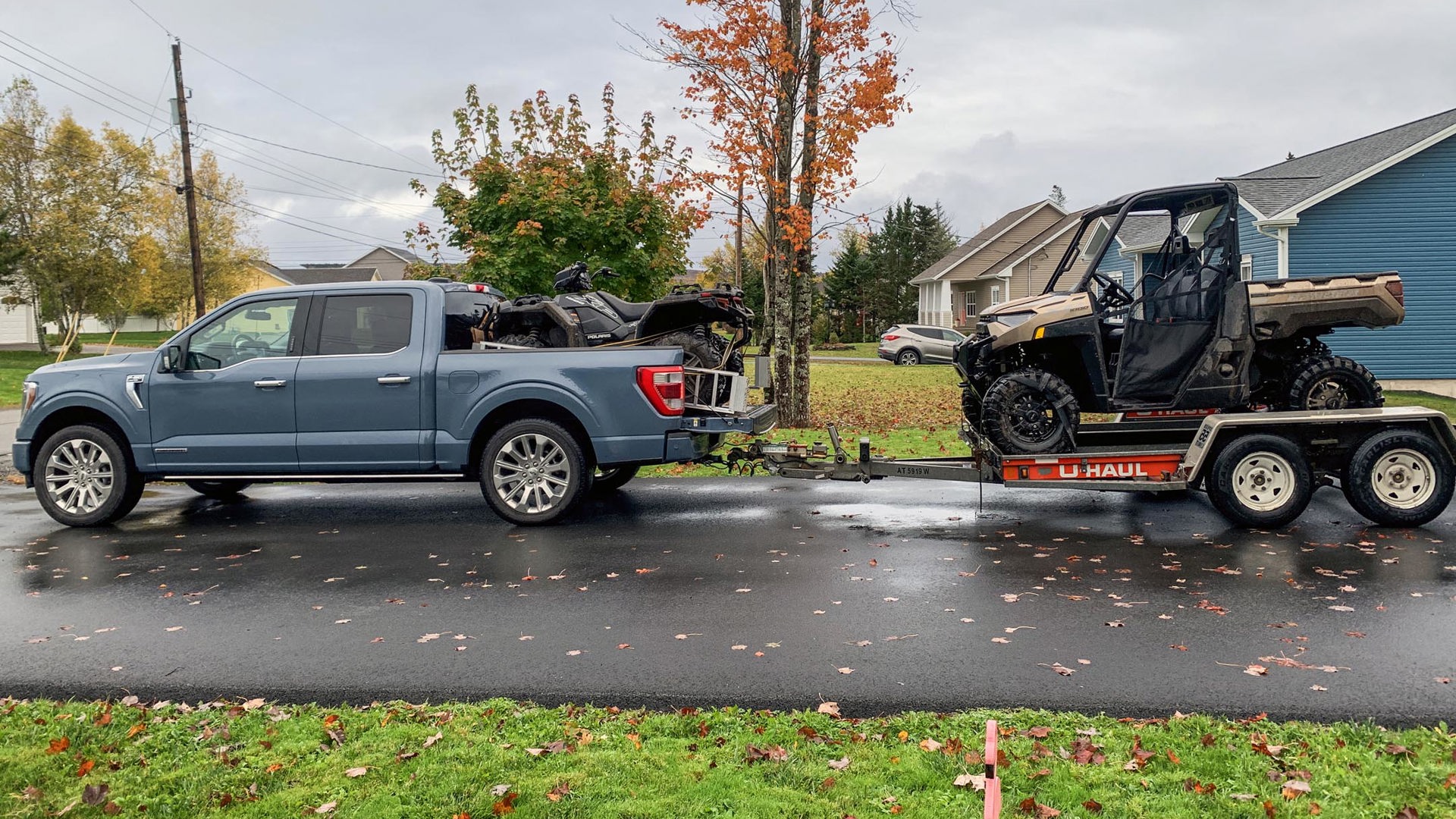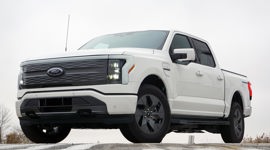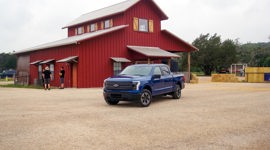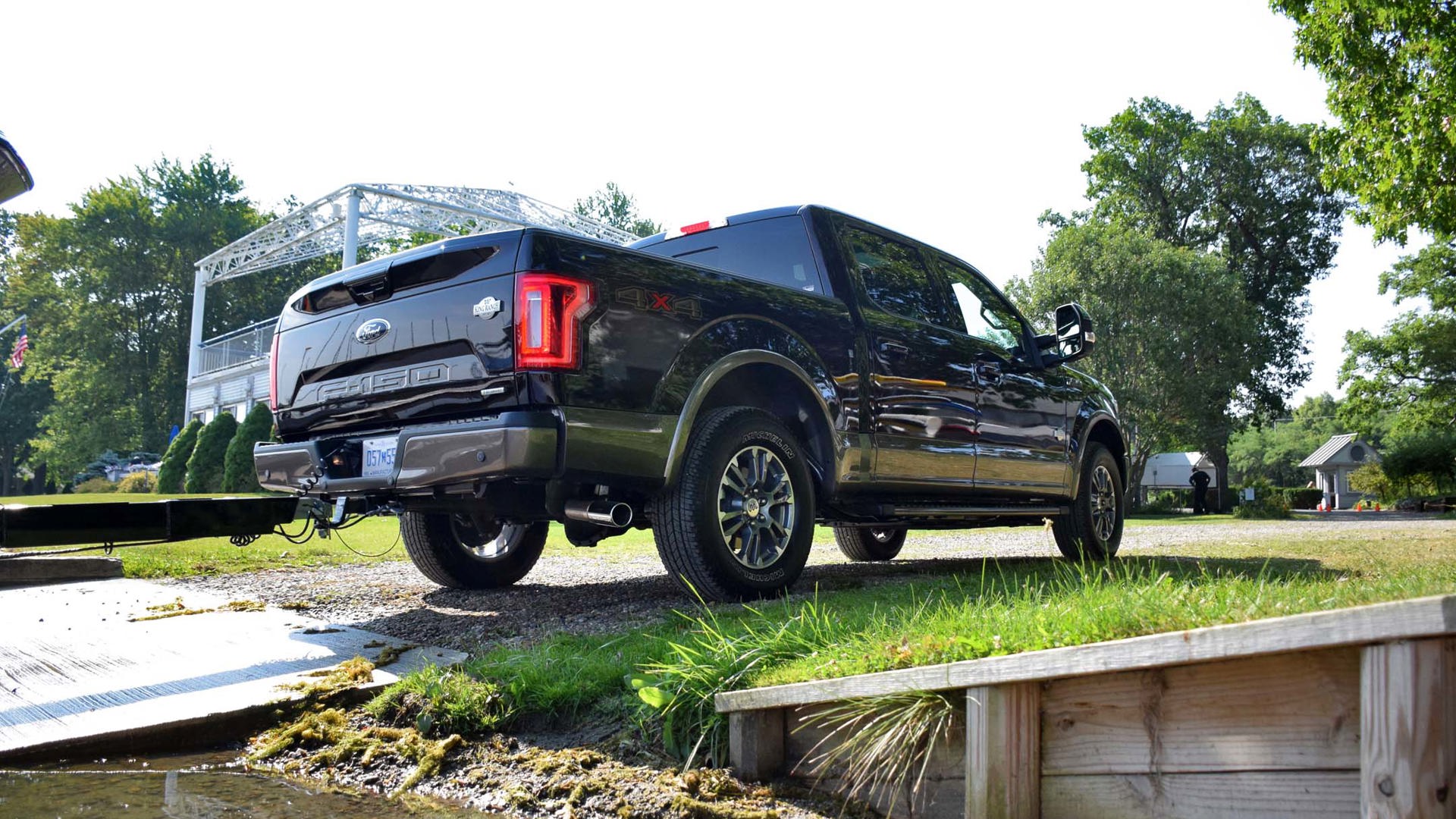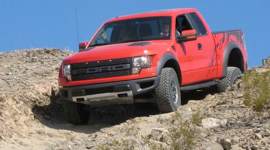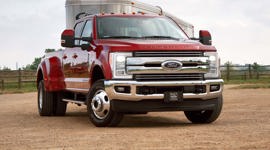As electric pickups become more common, there’s no shortage of armchair experts pontificating about their suitability for towing and hauling.
It’s against this backdrop that we decided to examine the impact these typical truck activities have on non-typical trucks. That’s why we wrangled an all-electric 2024 Ford F-150 Lightning along with a gas-electric F-150 Hybrid – two trucks that, as-tested, were priced within a stone’s throw of $110,000 each. The former featured a 131-kWh extended range battery, while the latter boasted a 115-L fuel tank.
For towing purposes, we selected a Polaris Ranger XP 1000 and strapped it to a flat deck trailer for a total of 1,700 kg (3,800 lb), and stuffed a roughly 408-kg (900-lb) Polaris Sportsman ATV in the back. As the combined loads exceeded the hybrid’s capacity – don’t forget that tongue weight affects payload – we conducted these tests separately and safely.
The Test
Setting out on a 100-km loop of highway and unpaved rural roads, we were surprised to learn the payload of the Polaris in the back of the F-150 Lightning had negligible effect on its range. For all the moaning and crying about how electric vehicles (EVs) aren’t fit for pickup truck duty, it seems hauling like a Real Truck is a non-issue. We observed less than 10 per cent deviation in both estimated range and indicated energy consumption when compared with driving the same route with no weight in the back.
We did note the Lightning had more so-called “squat” than its gas-powered sibling with the Polaris directly above its back wheels, the Lightning’s suspension sagged by about 32 mm (1.3 in) as measured to the top of its rear wheel arch. The hybrid, meanwhile, was all but unaffected in terms of ride height. Score one for a solid rear axle and leaf springs compared to the Lightning and its coil springs.
Likewise, the F-150 Hybrid shrugged payload weight like dirt off its shoulder, with refuelling sessions after both laden and unladen test drives over the same 100 km route again showing a roughly 10 per cent increase in consumption – 11 L of gas after the empty drive, and just 12 L when loaded.
Towing, of course, is a wildly different story. For that exercise, we loaded up both trucks by attaching the aforementioned trailer. Ford makes hitching easy in either pickup, with a bevy of cameras and easy-to-access wiring connections. A raft of tools baked into the infotainment system, including the ability to tell the truck how long and heavy the trailer is, pays dividends and is worth taking the five minutes to set up – particularly in the Lightning.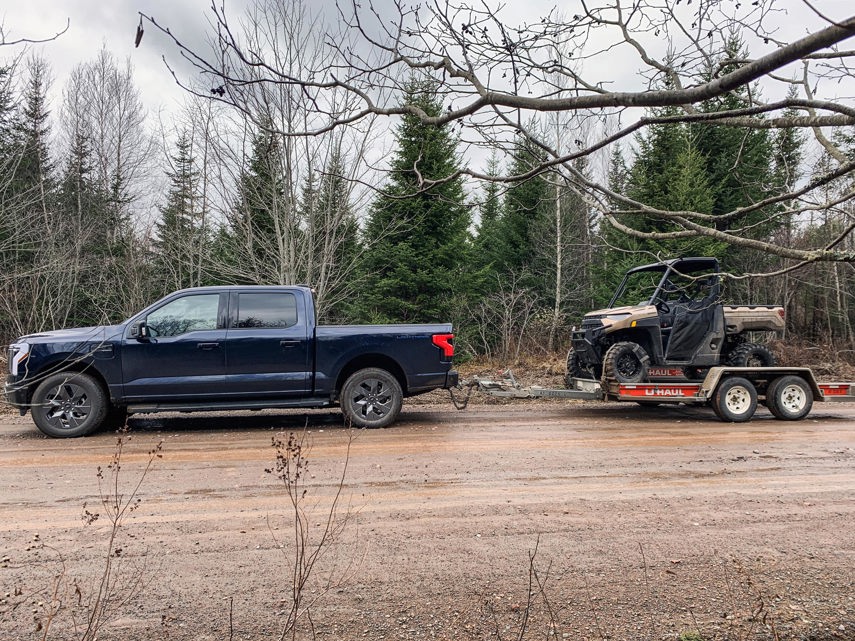
Clearly recognizing that towing impacts all-electric range far more than payload, Ford massively (and realistically) adjusts the estimated range based on those inputs. In this case, it dropped the indicated number of kilometres remaining from 340 to 191 with an indicated 80 per cent charge, suggesting Ford estimated our Lightning would give up about half its range with a relatively light load hooked up to the back.
Driving 66 km to the trailhead over a mix of paved highway and rural roads drained that number to an indicated 146 km remaining. This suggests Ford is being intentionally pessimistic when it’s time to tow. As for energy consumption, we regularly saw an indicated average of 54.0 kWh/100 km while towing compared to roughly 30.0 kWh/100 km unladen over the same route in equal conditions.
The F-150 Hybrid fared similarly in terms of extra energy consumption, swilling back just over 10 L of regular-grade gasoline on our 66-km route compared to 7.5 L without the trailer. That’s a 40 per cent impact on consumption, compared with the Lightning’s 45 per cent. However, with its 115-L fuel tank, non-towing range was estimated to be in the neighbourhood of 900 km – a massive difference compared to the estimated 515 km in the Lightning.
Final Thoughts
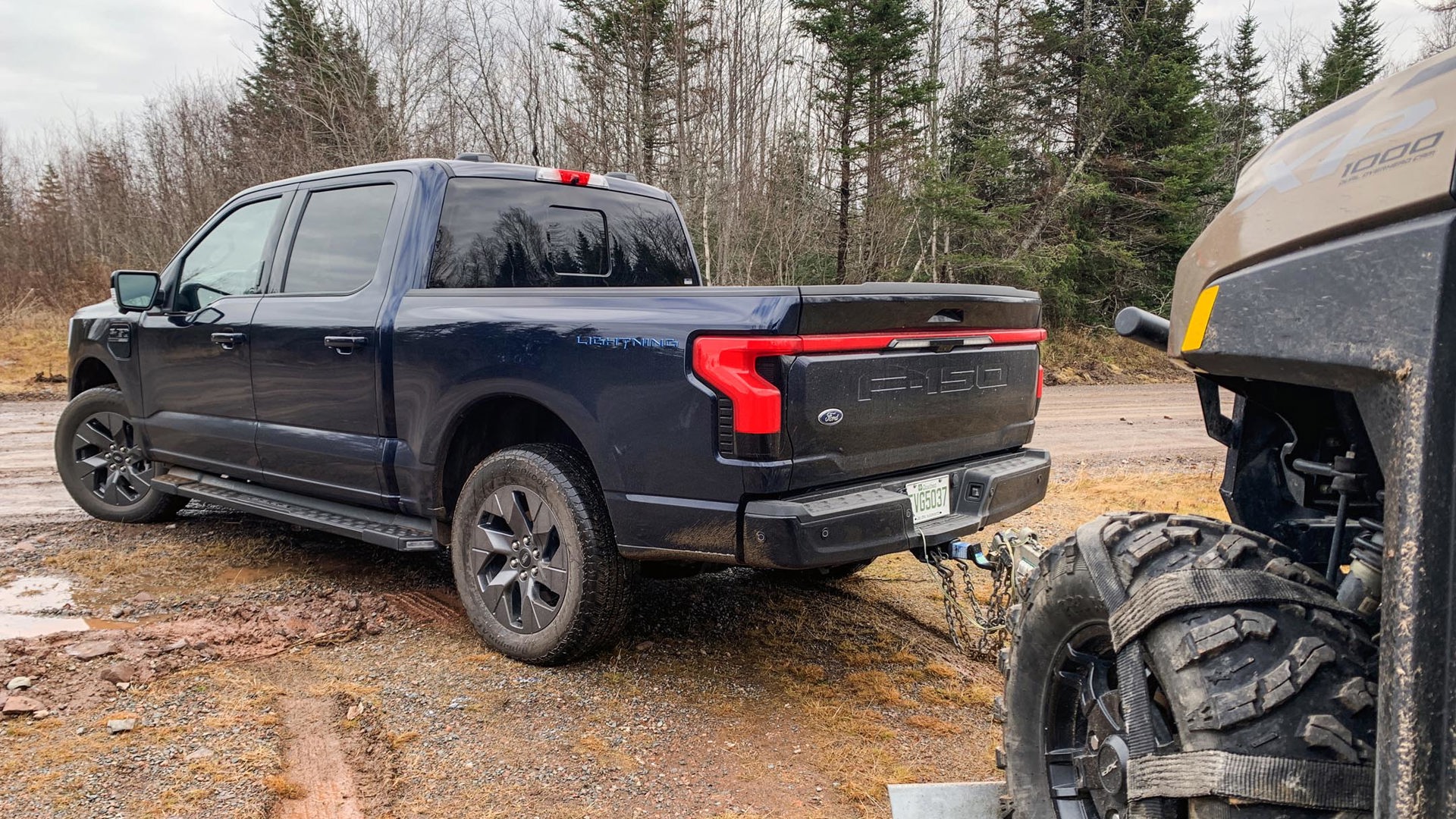
Somewhat surprisingly, the hit on total range was roughly the same for both powertrains: negligible with our payload, and impacts of about 40 and 45 per cent when towing with the F-150 Hybrid and Lightning, respectively. Of course, it’s worth noting the hybrid can conceivably start its day with a much longer range on a full tank of fuel than its electric counterpart can on a fully charged battery. In fact, it’s almost double.
Even so, it means EV naysayers will need to adjust their talking points when denigrating the 2024 Ford F-150 Lightning on its hauling prowess. The all-electric pickup doesn’t give up much to its gas-electric sibling in terms of range while towing, either, although it does so with far less traversable distance in the first place.
Both of these are damn good trucks, with the F-150 Lightning genuinely providing a better towing experience largely thanks to weight distribution and extra power. If engineers figure out how to make these batteries twice as robust in terms of energy density (such as solid-state batteries), the playing field will be all but levelled.
